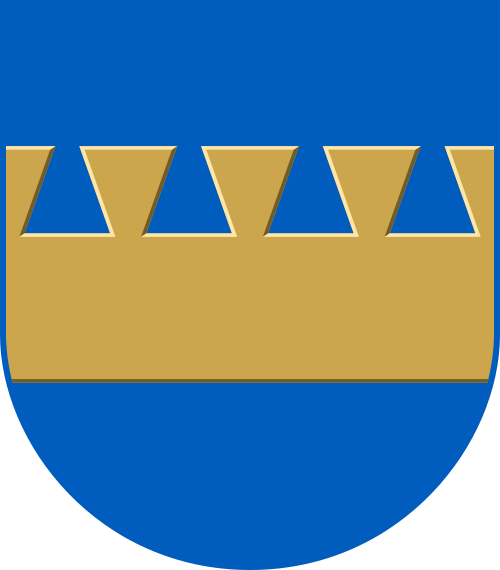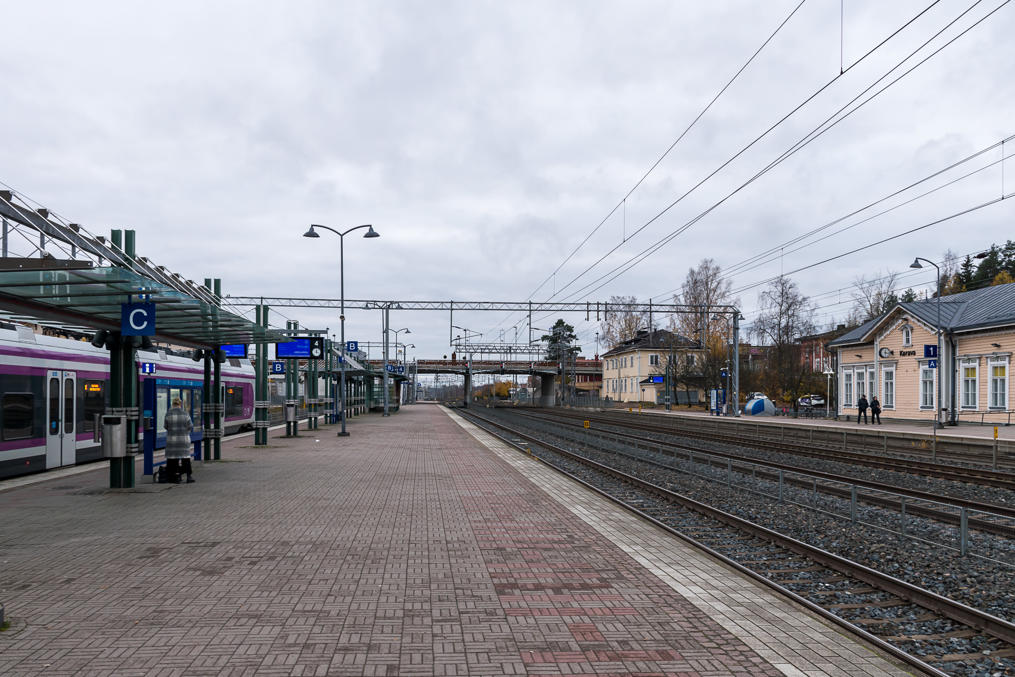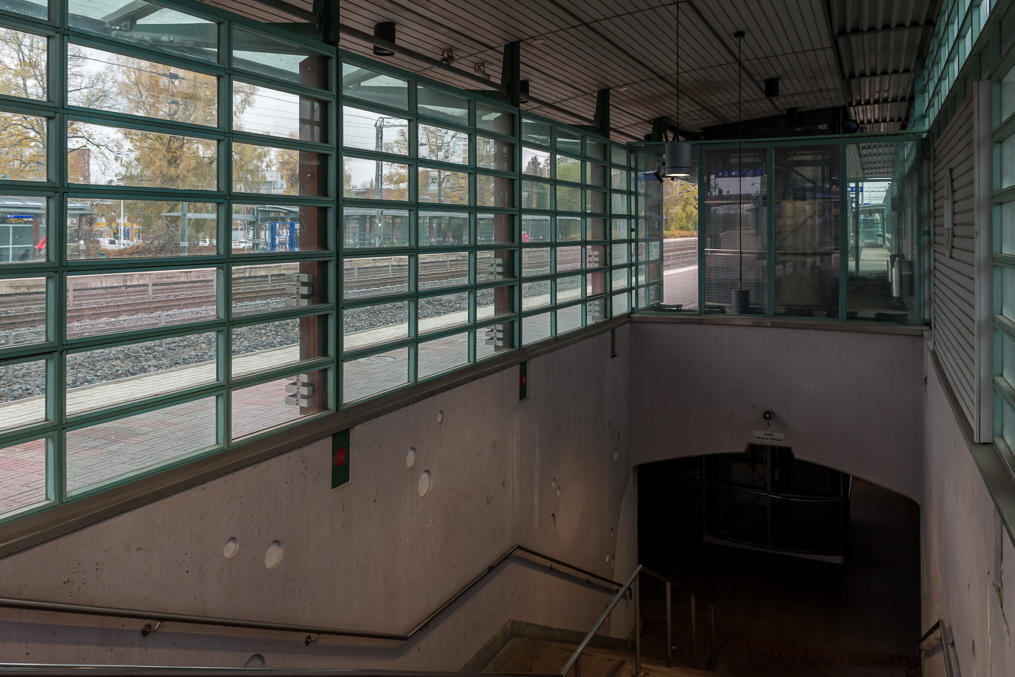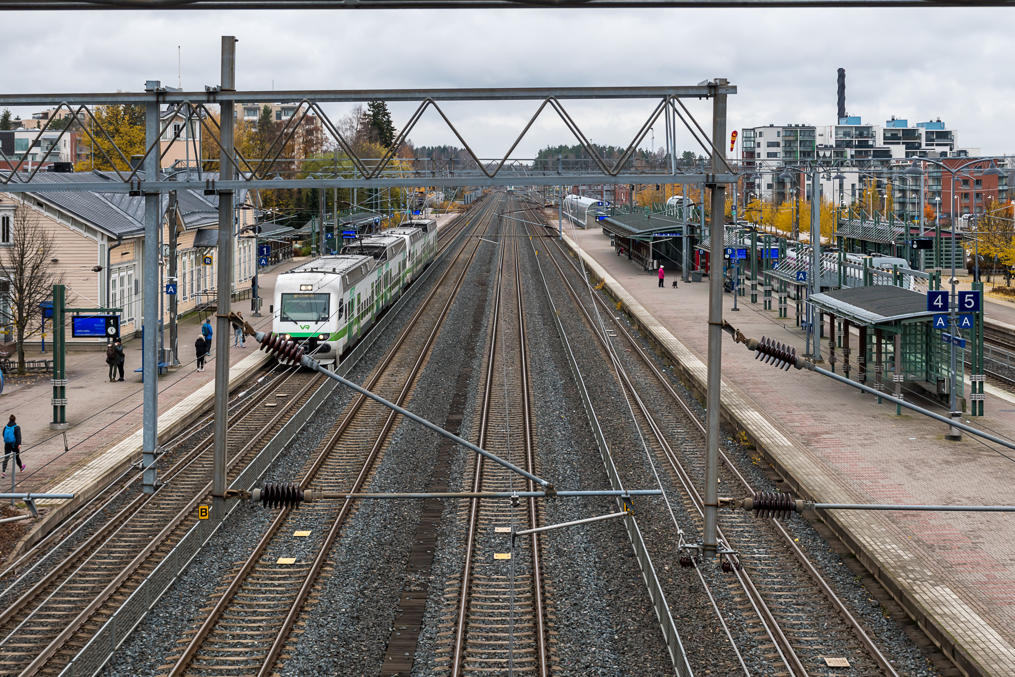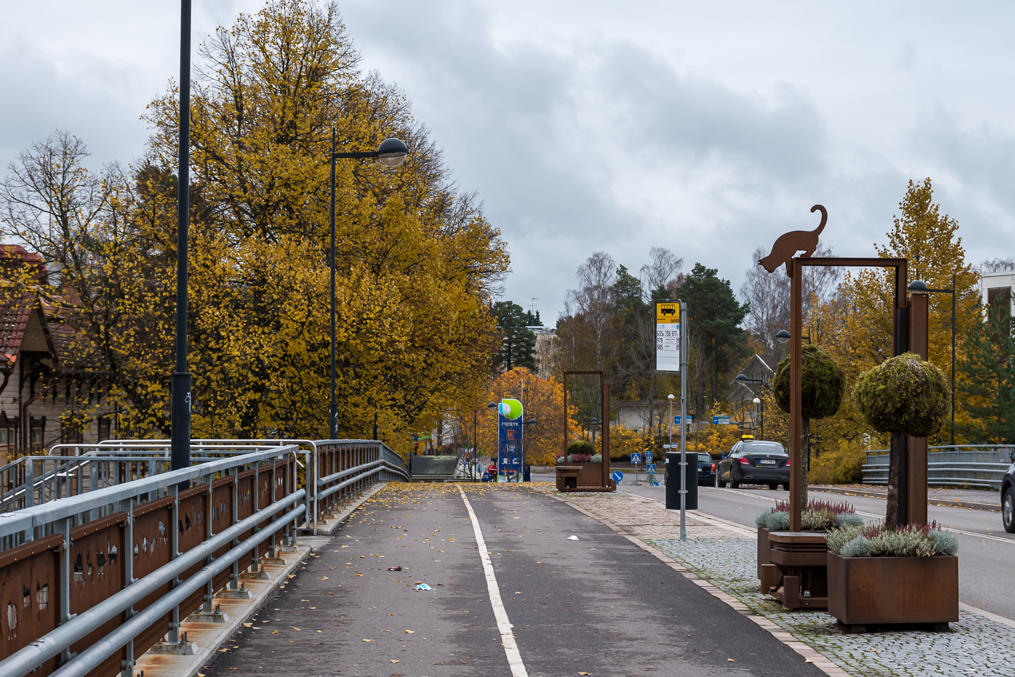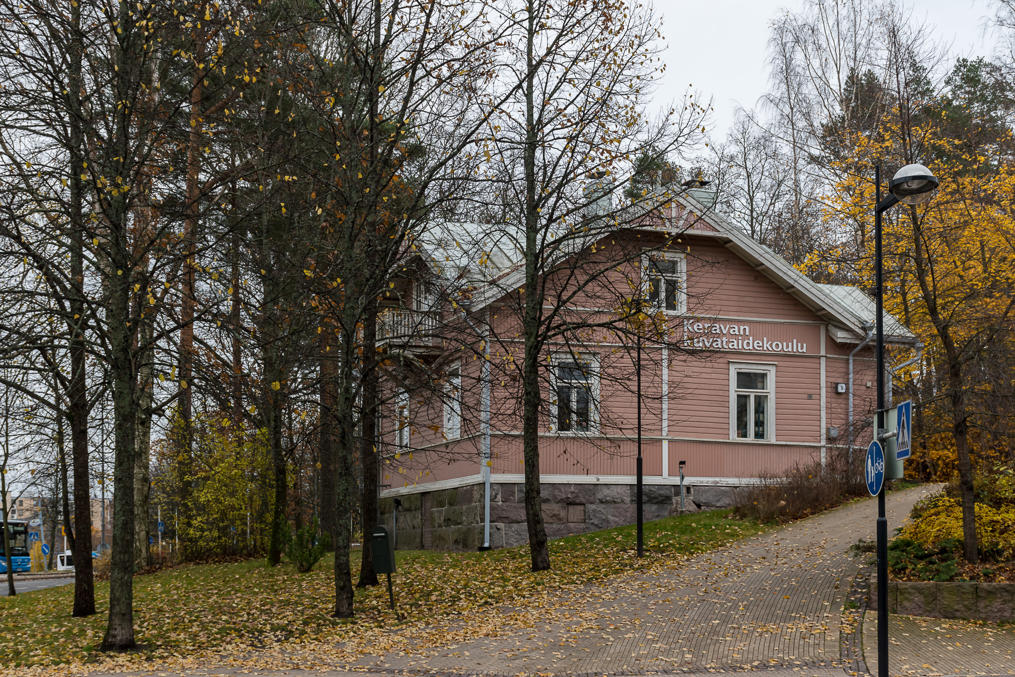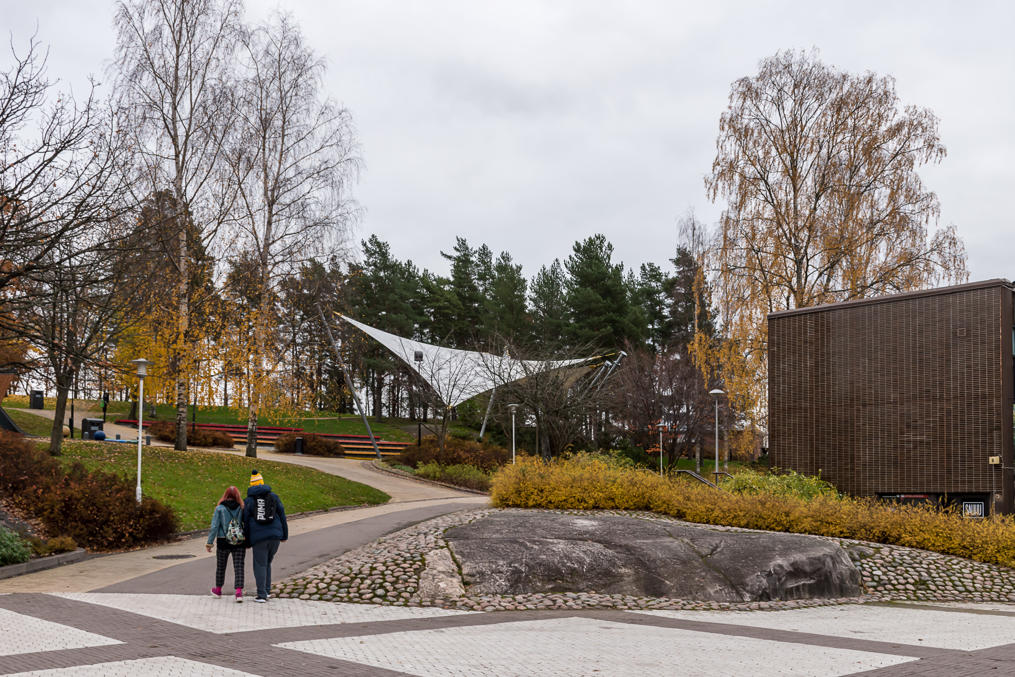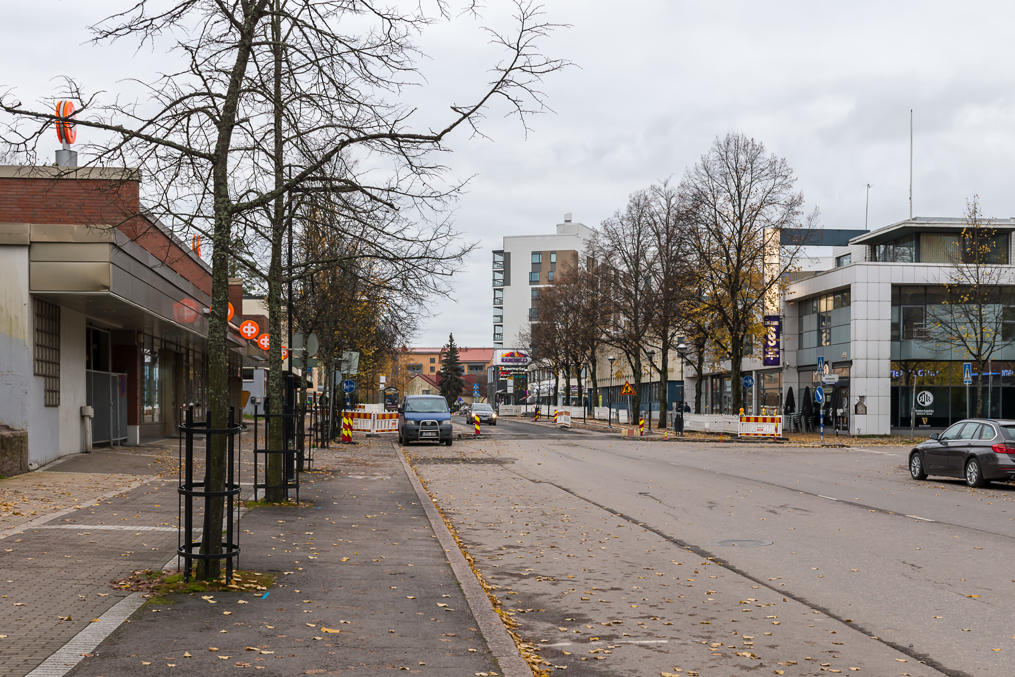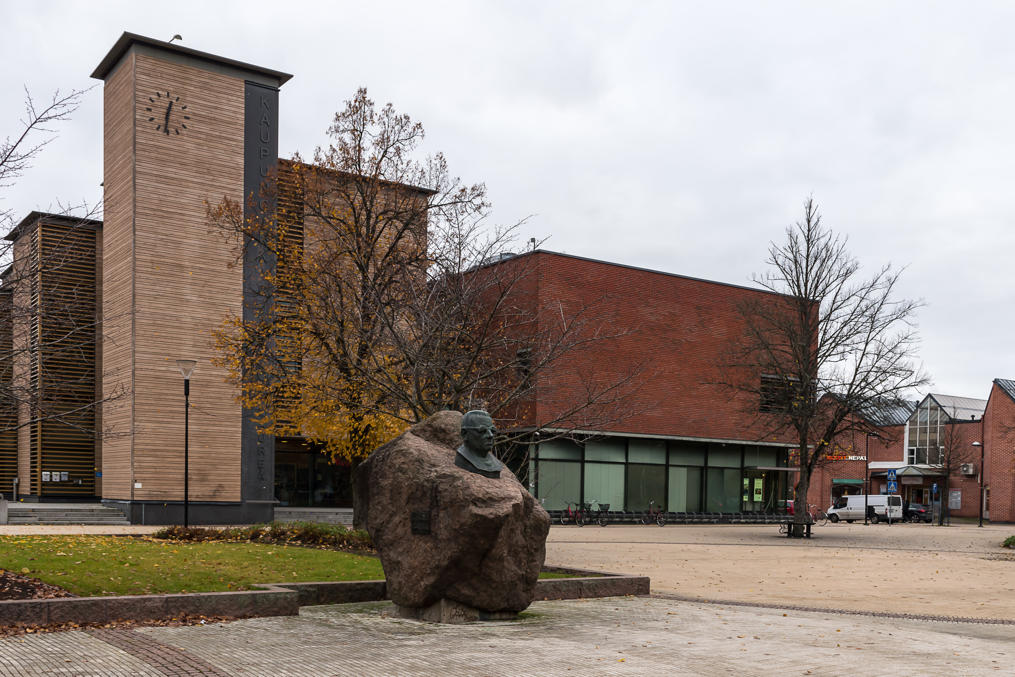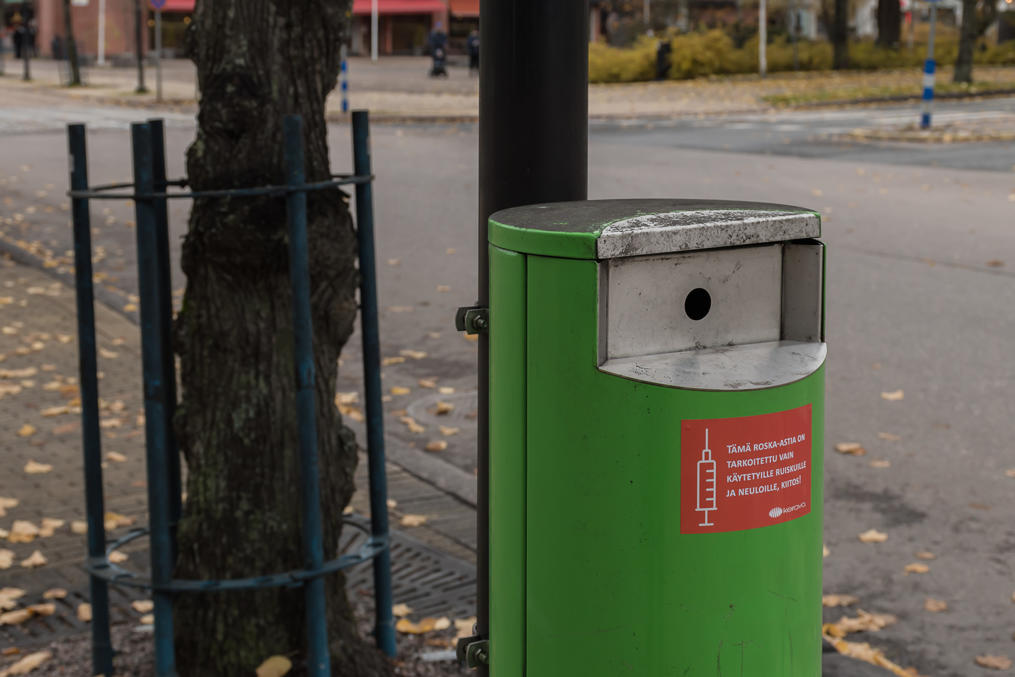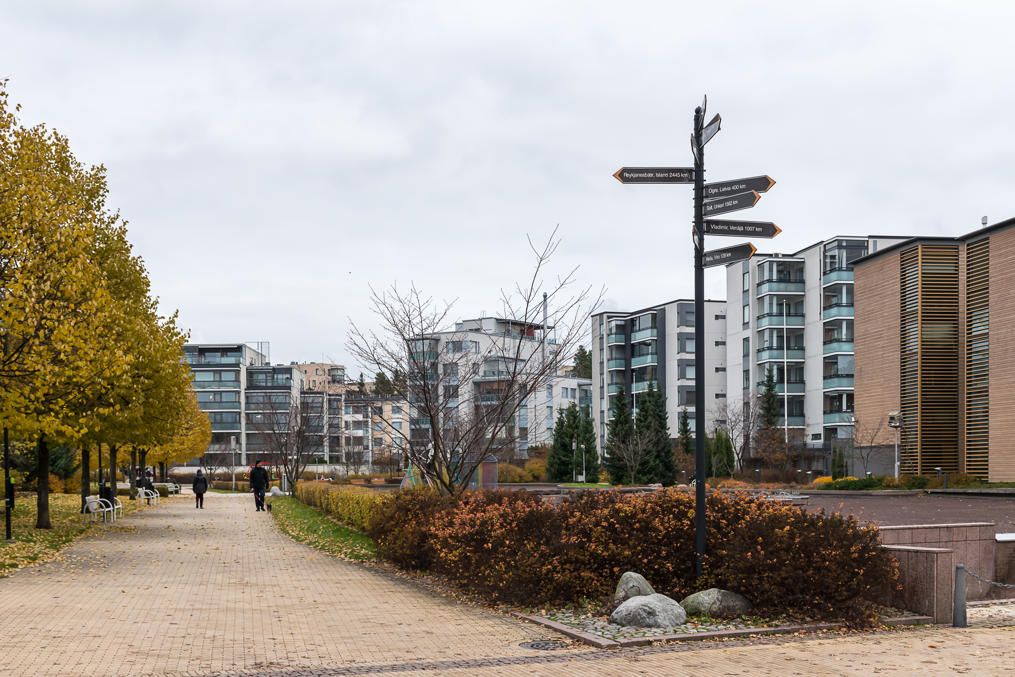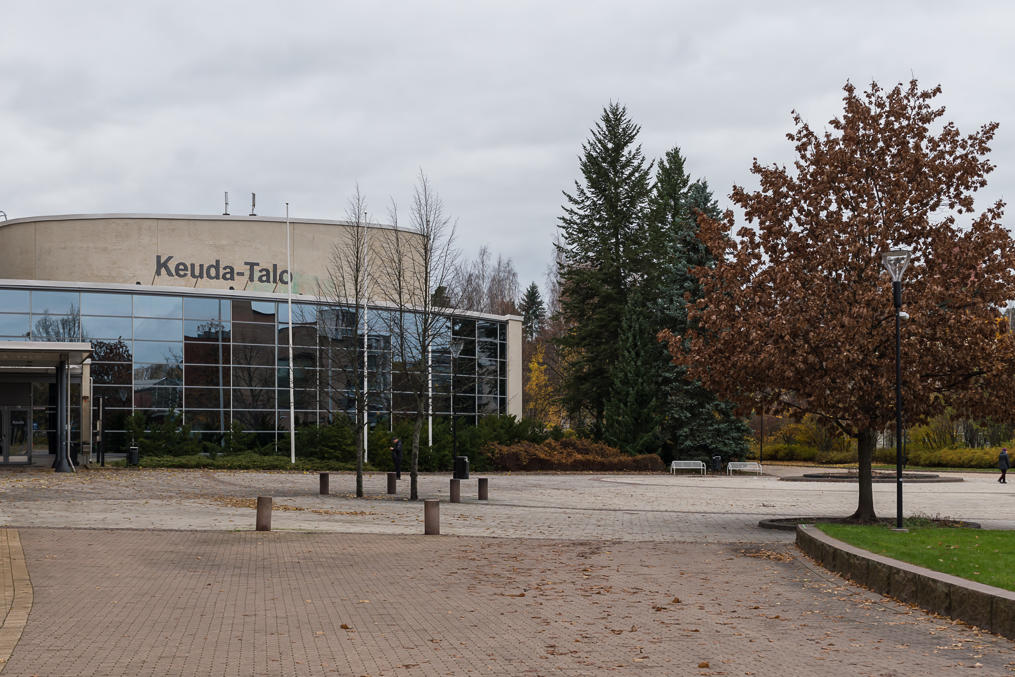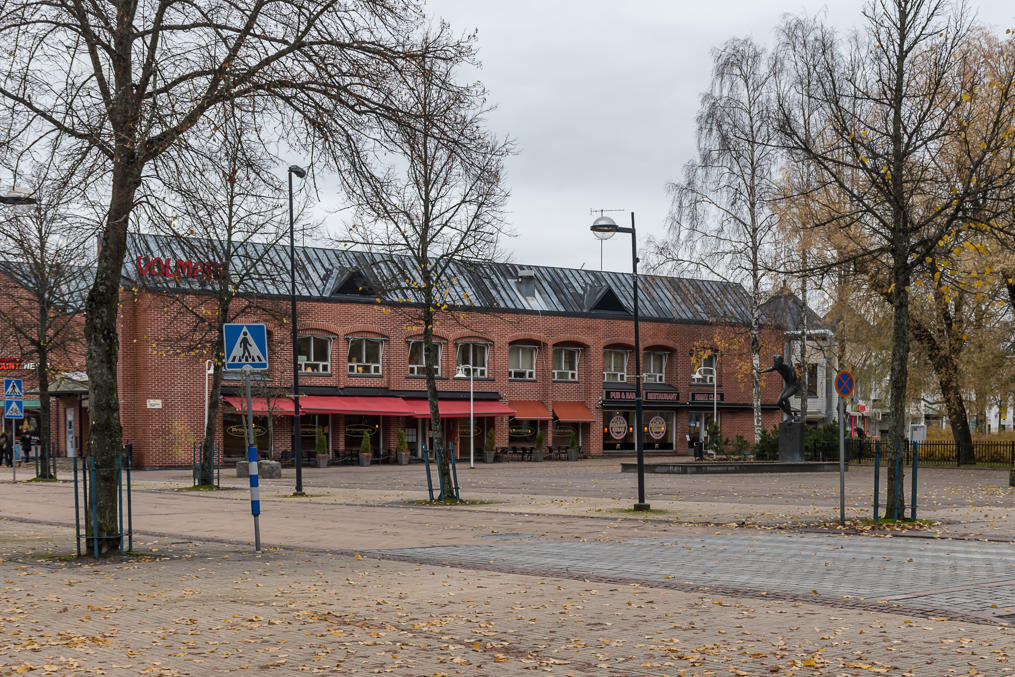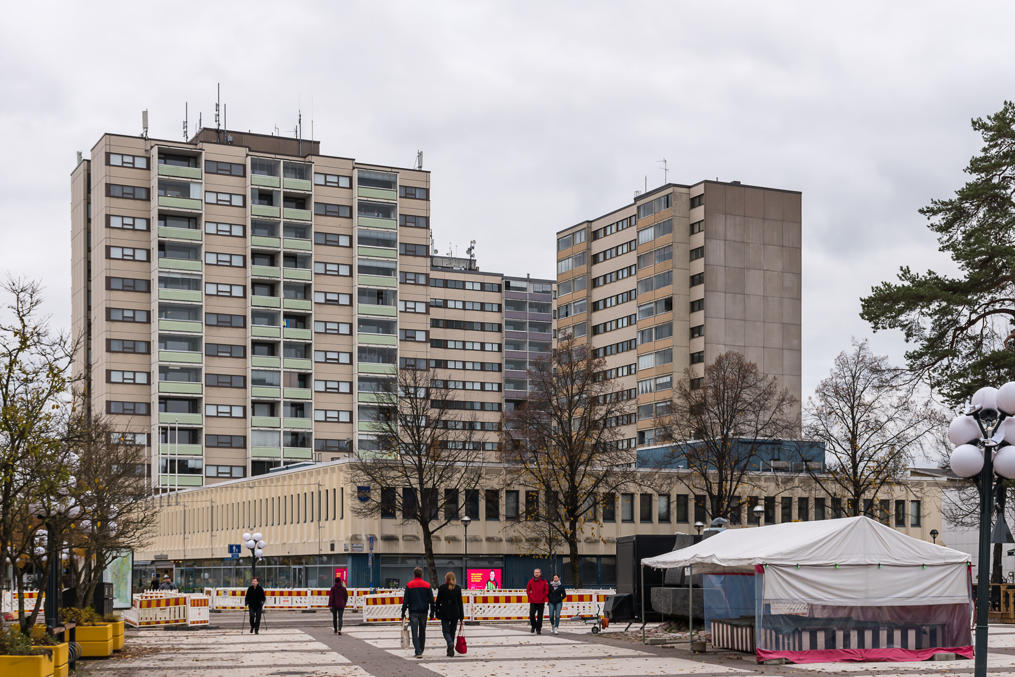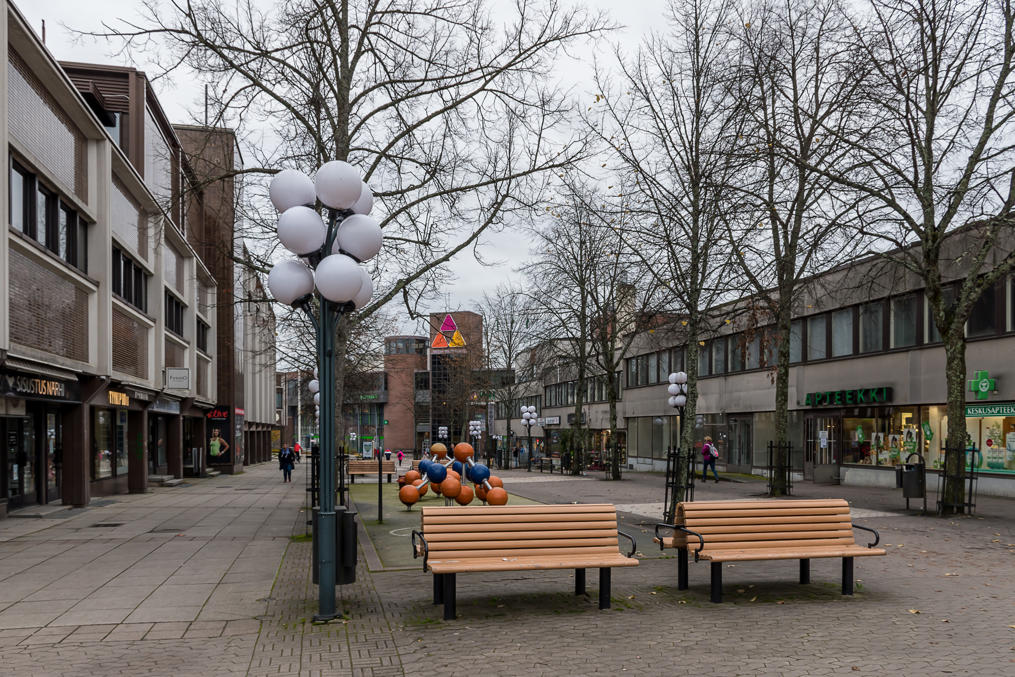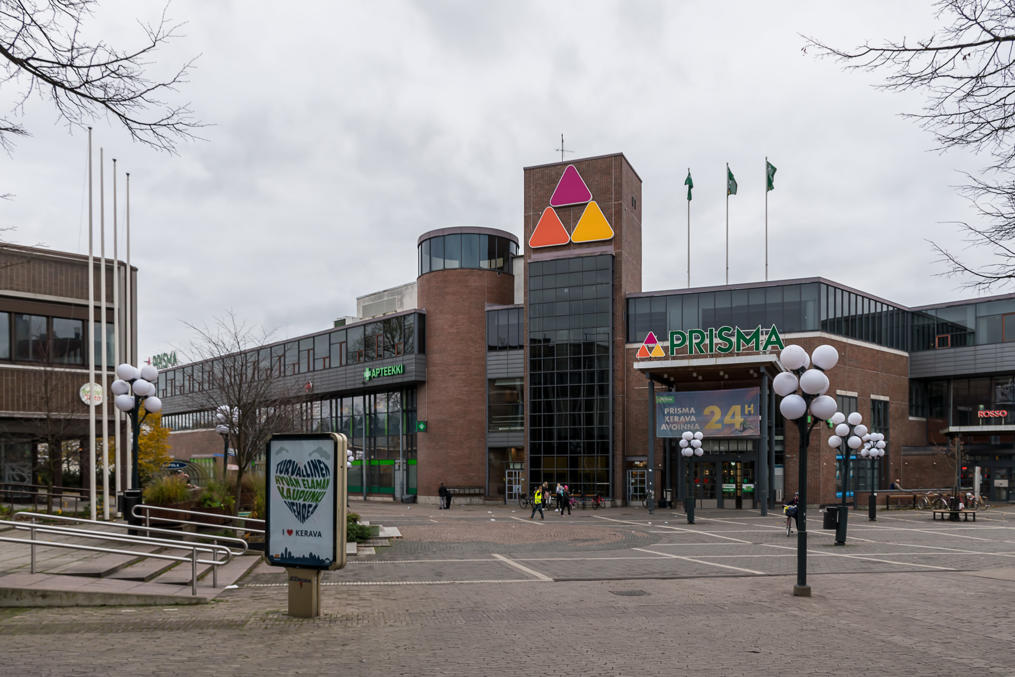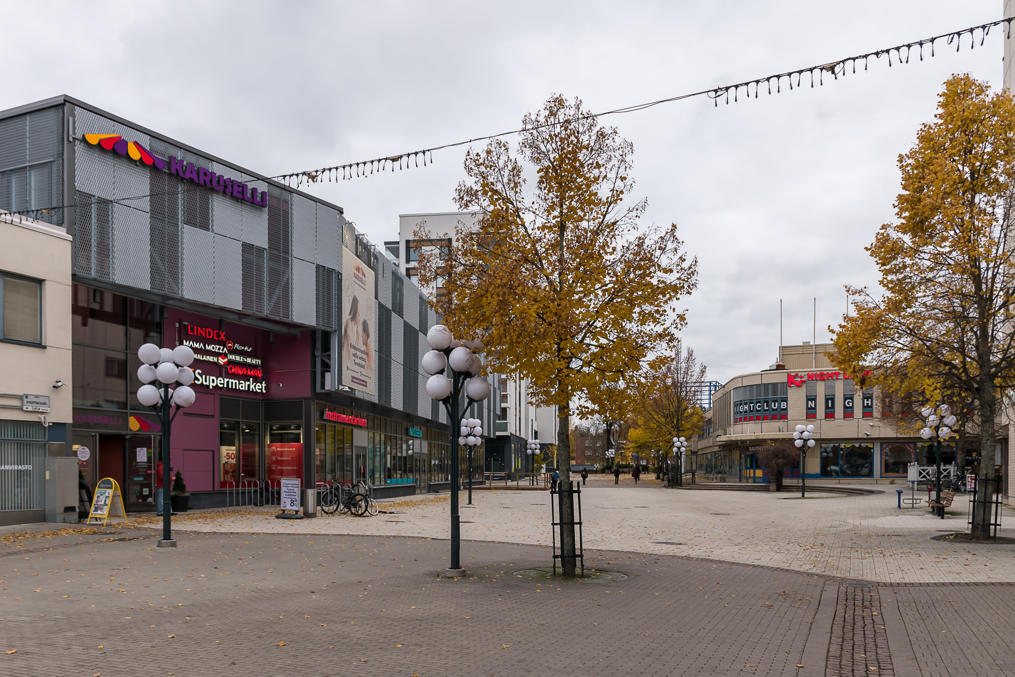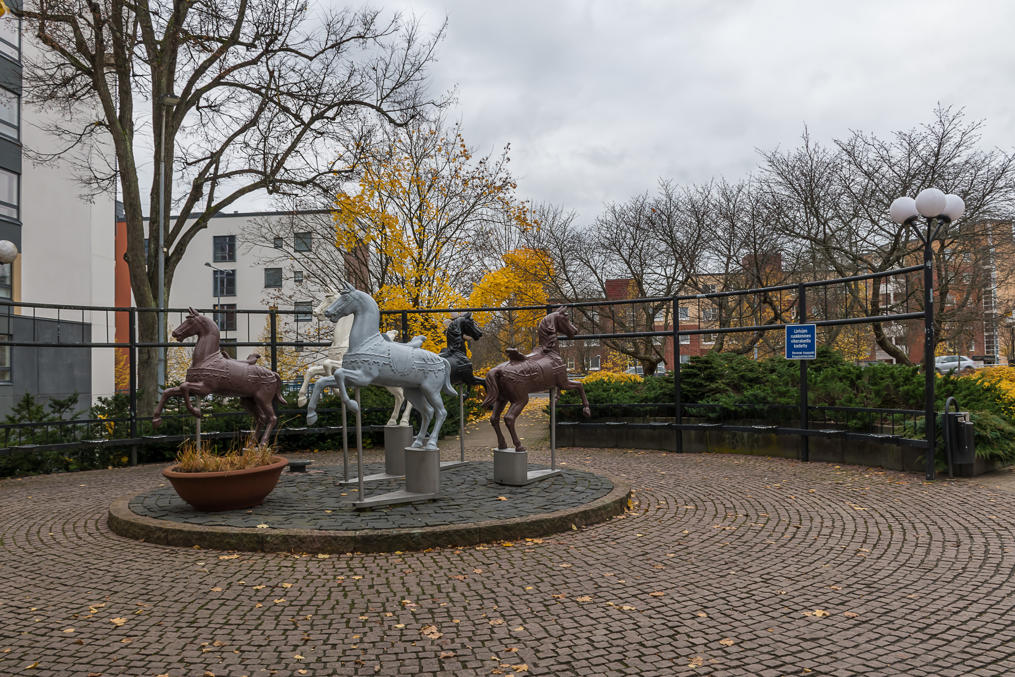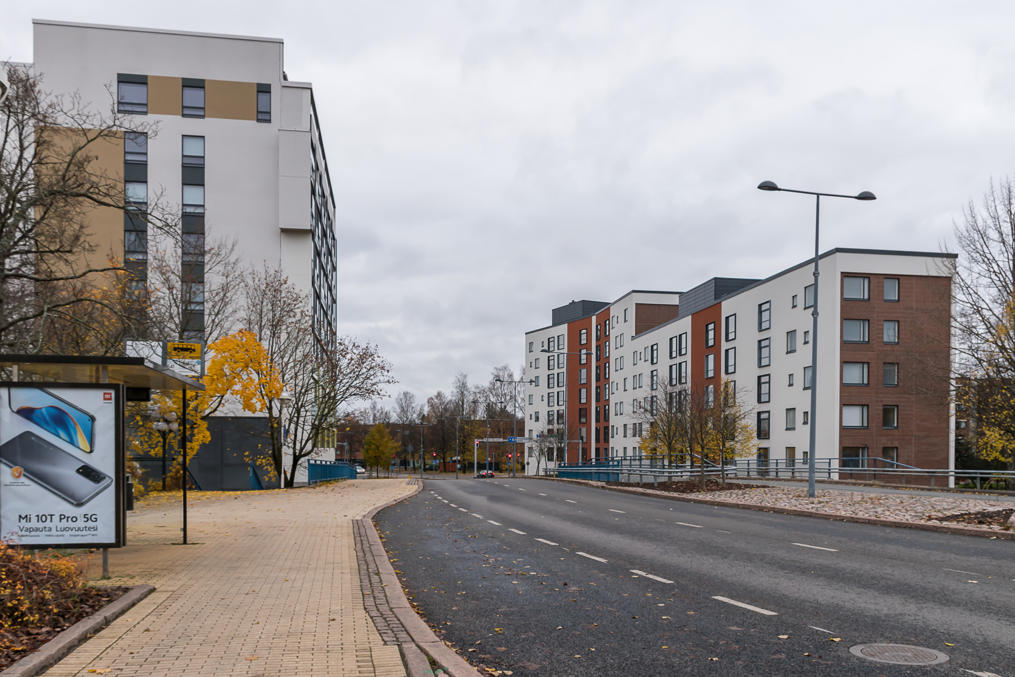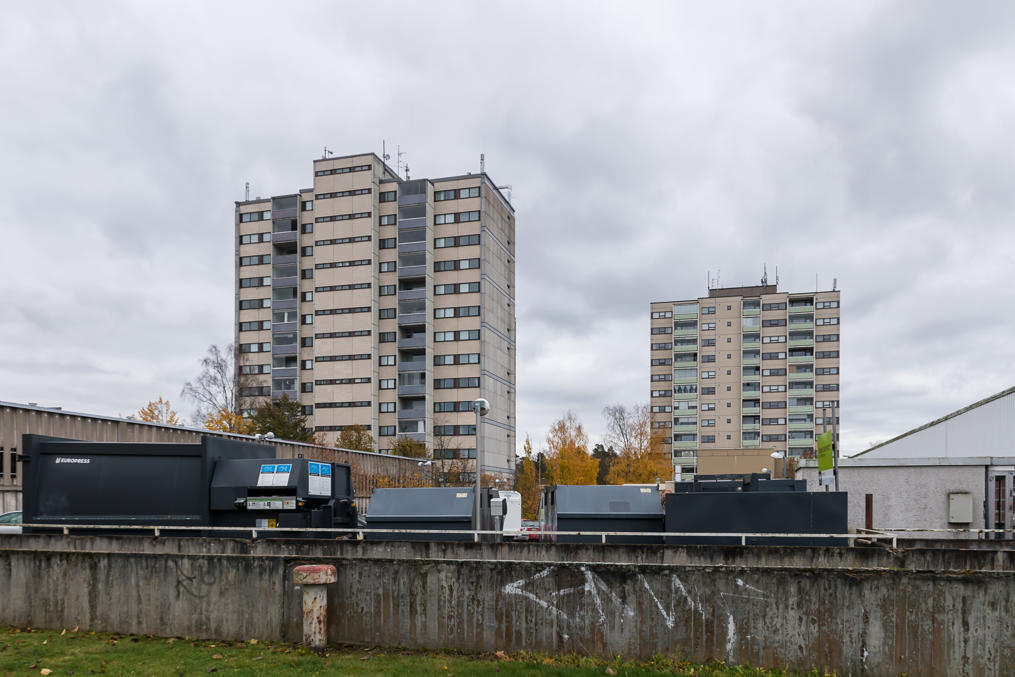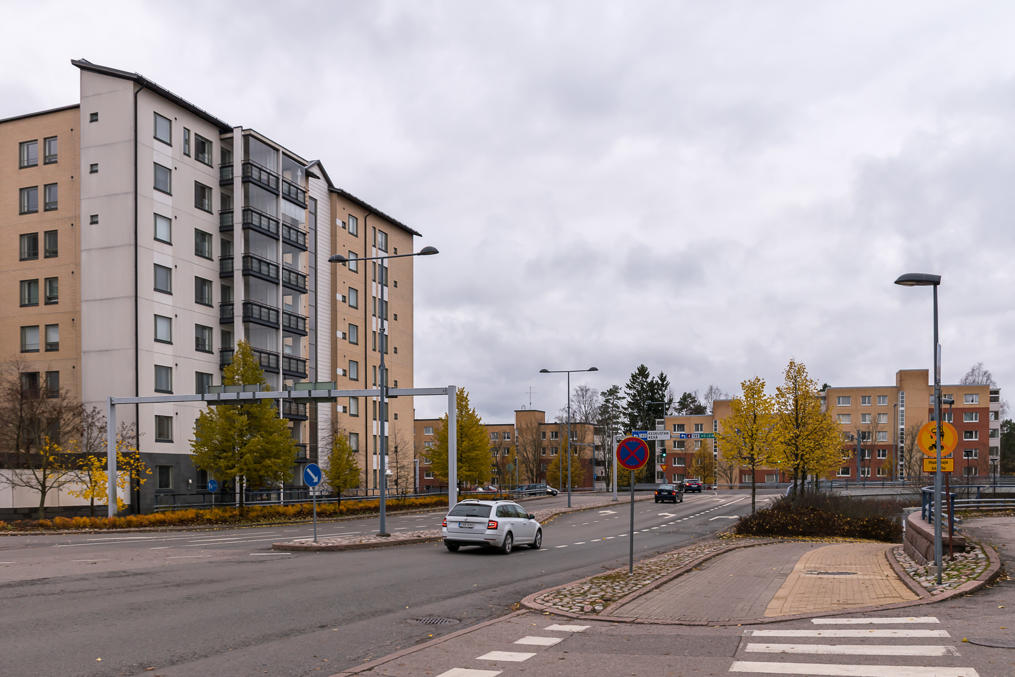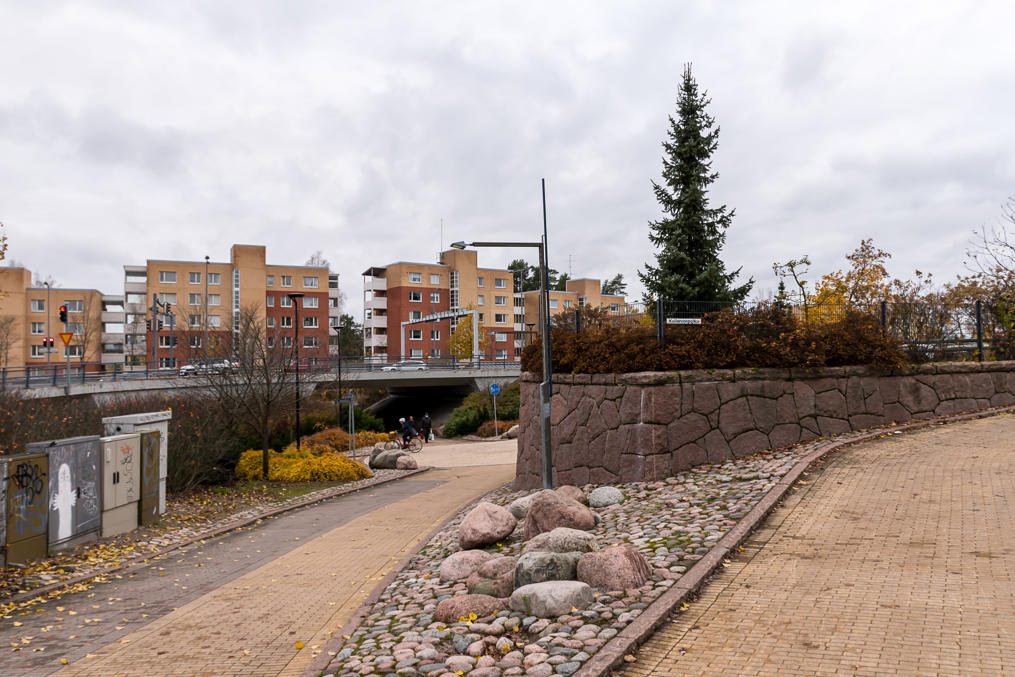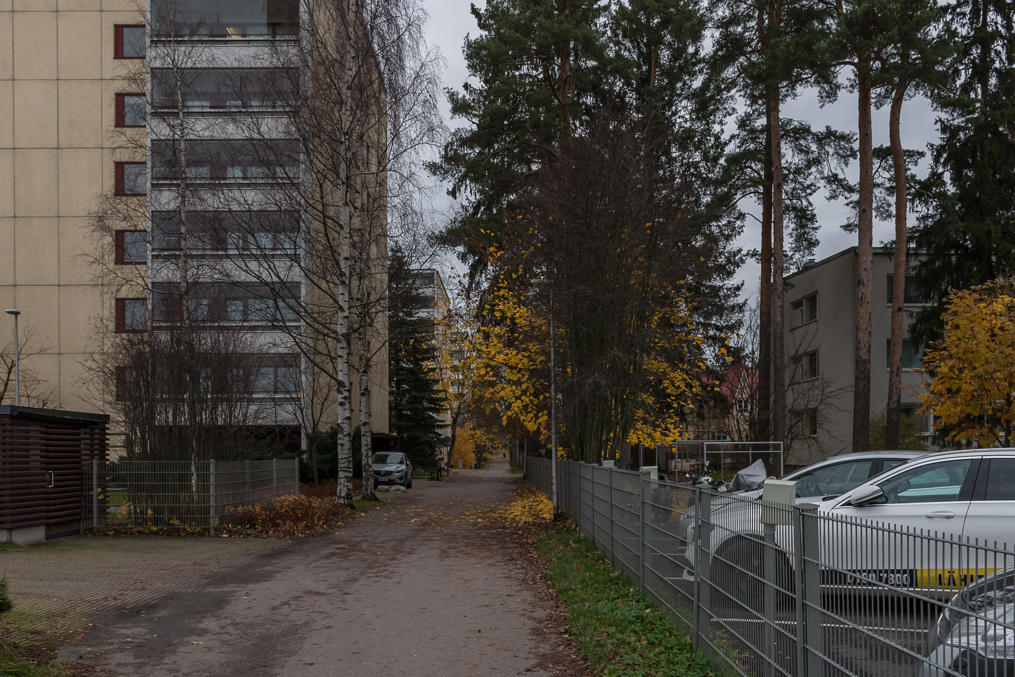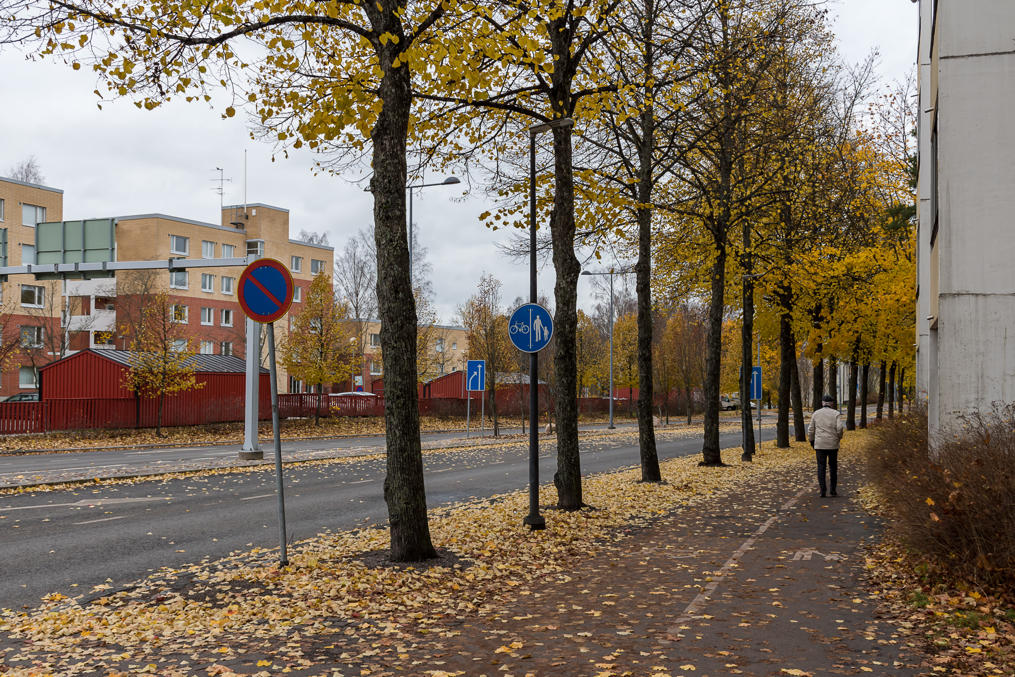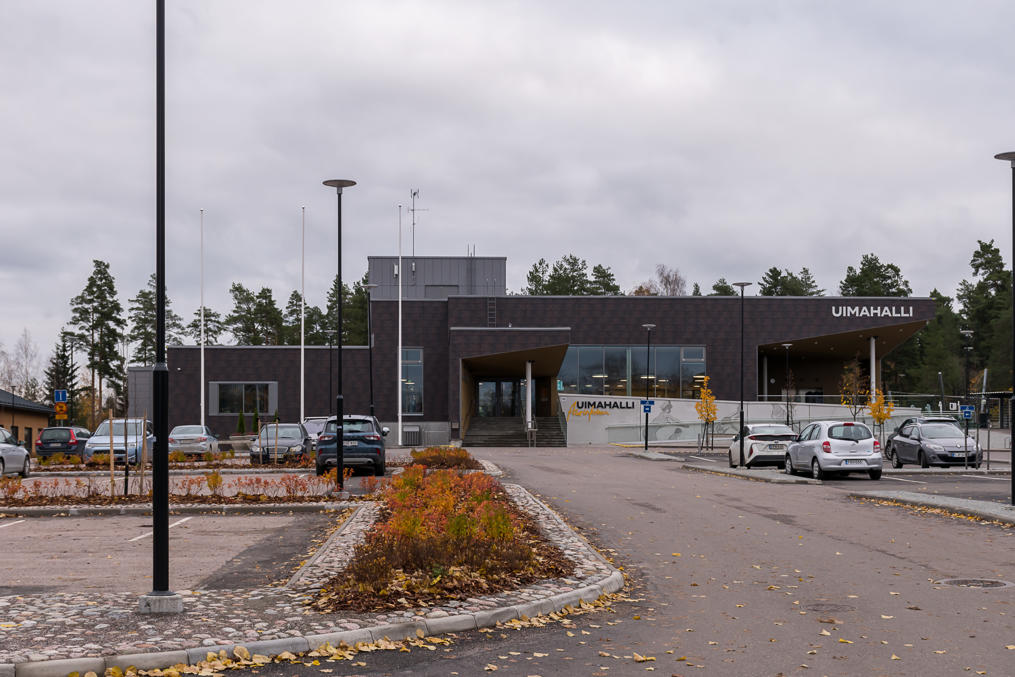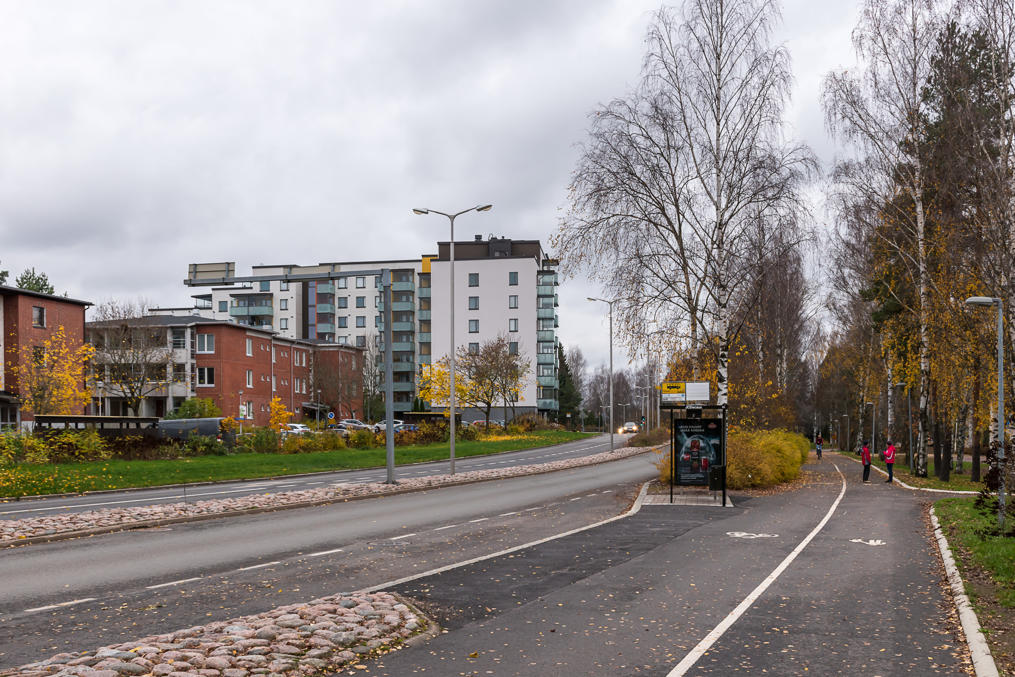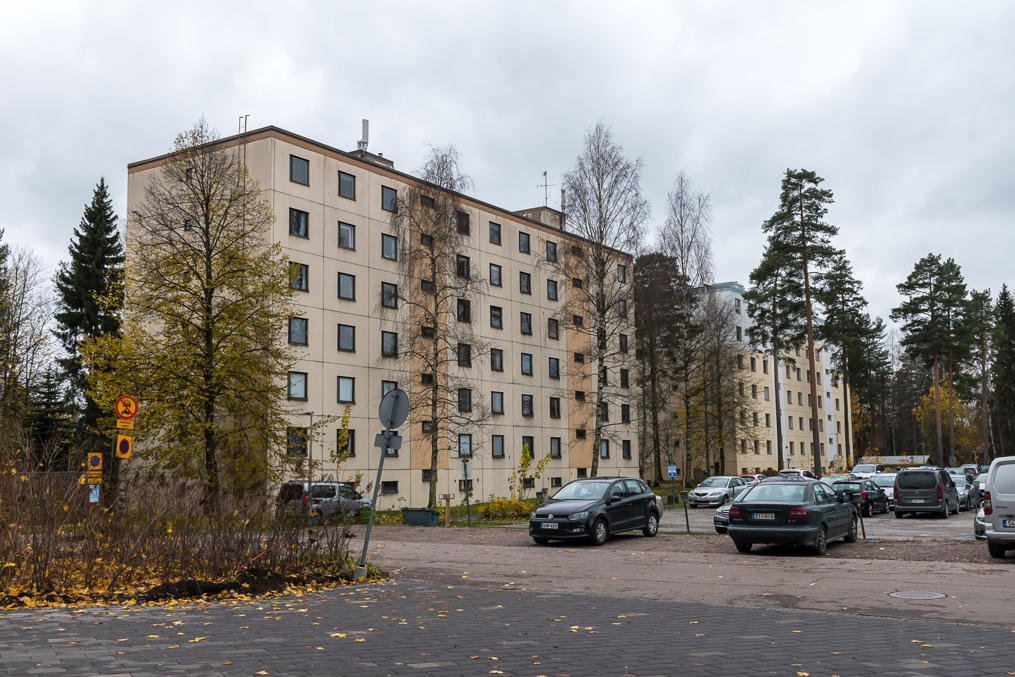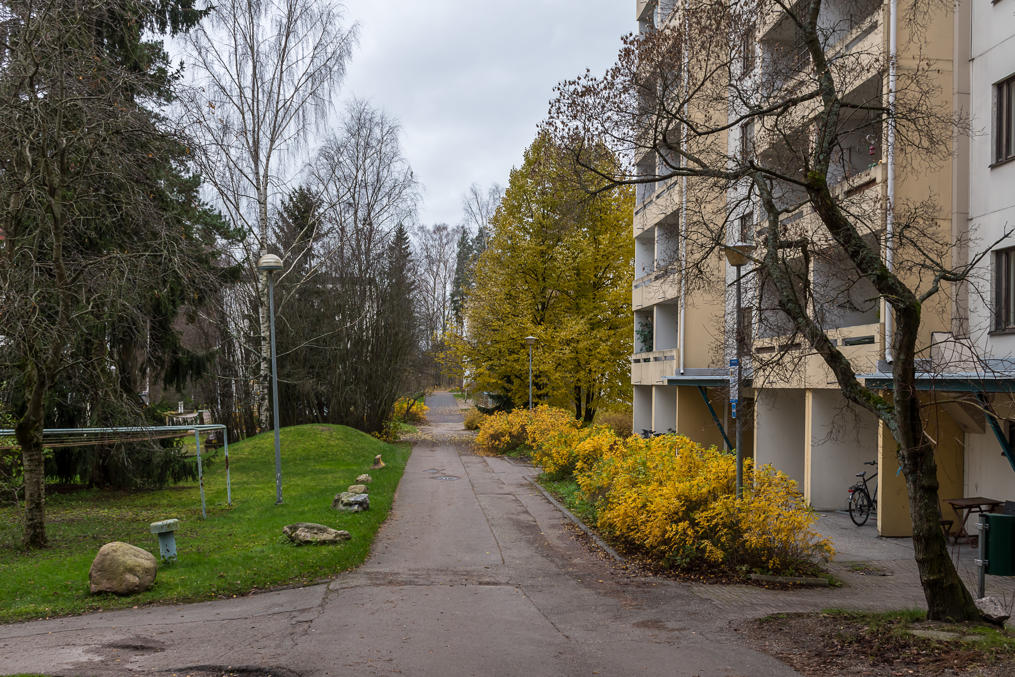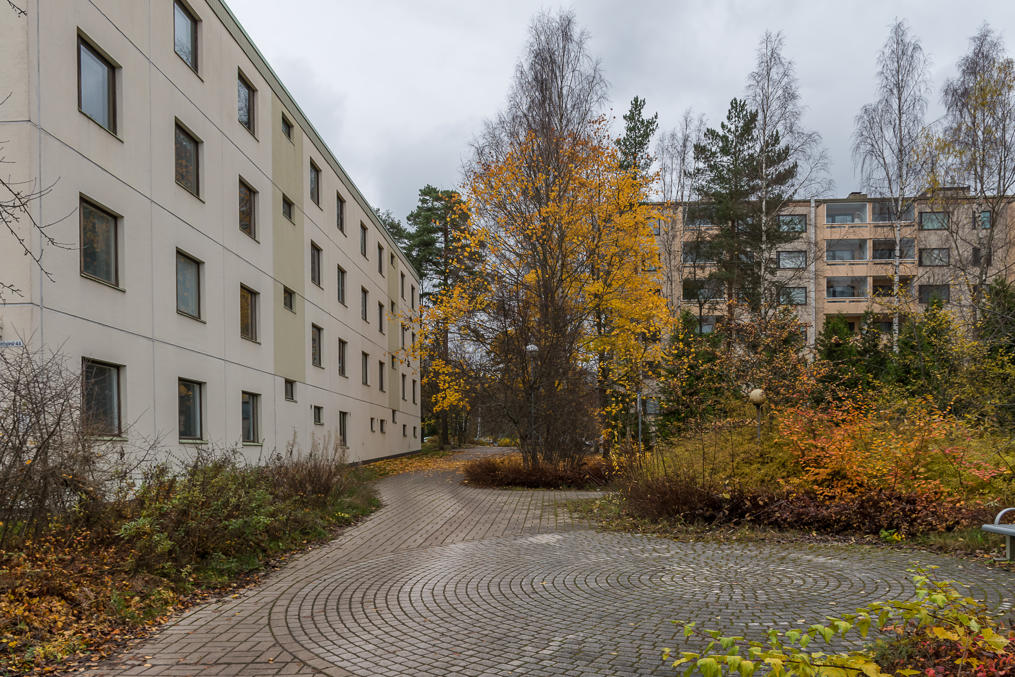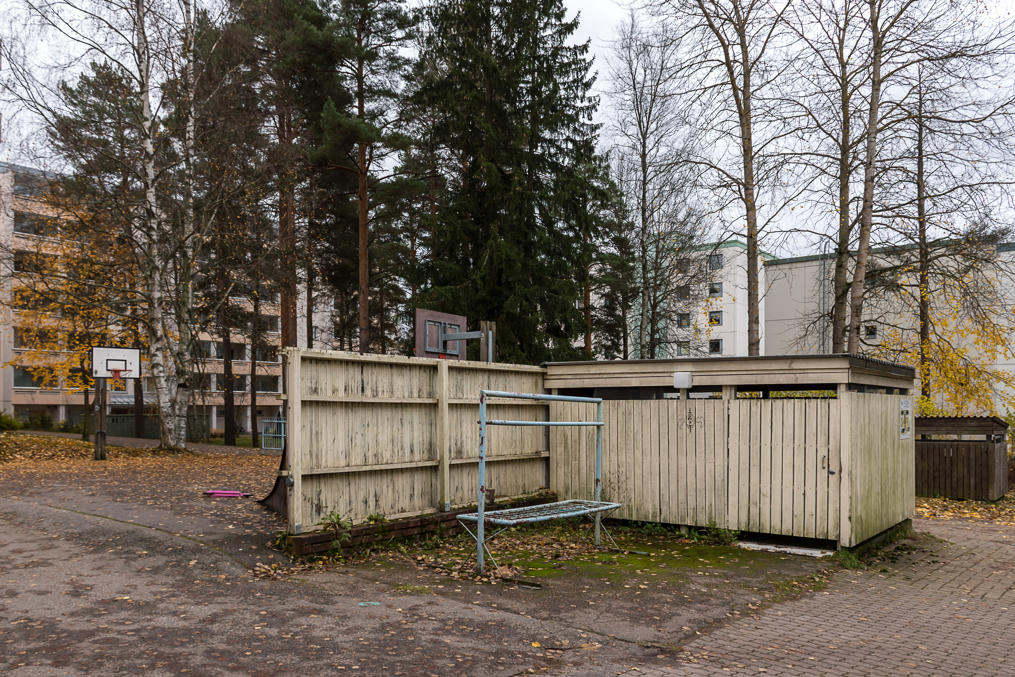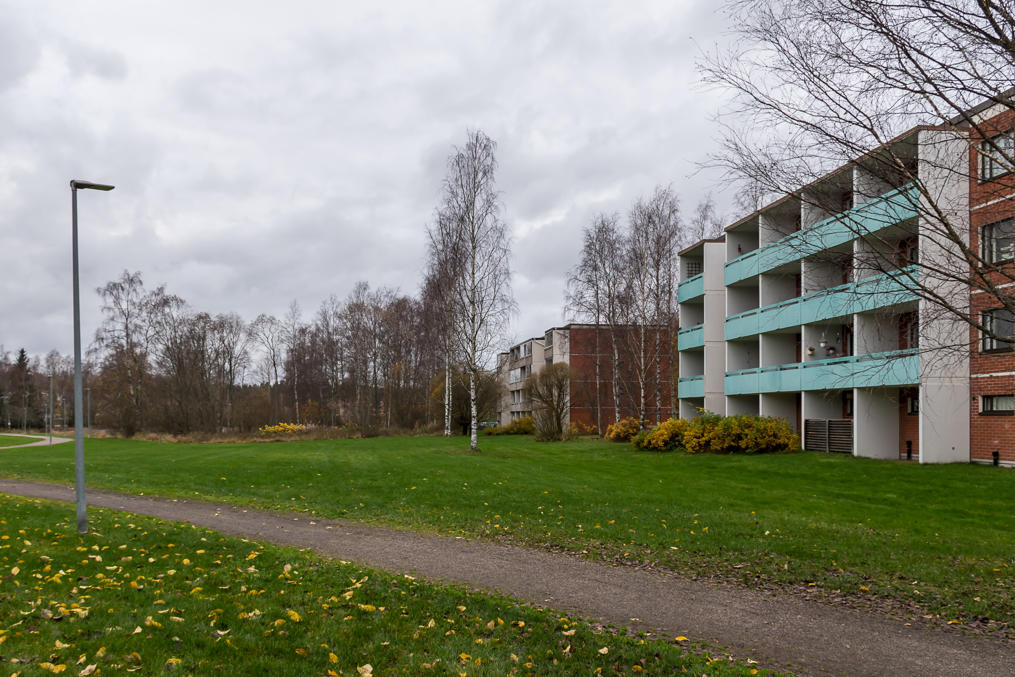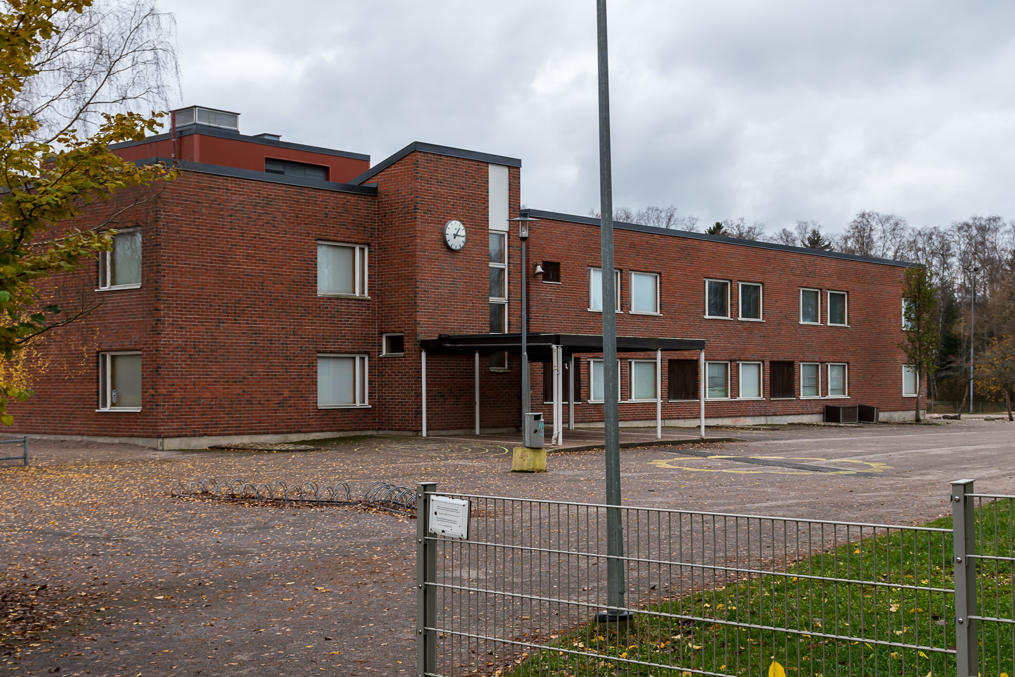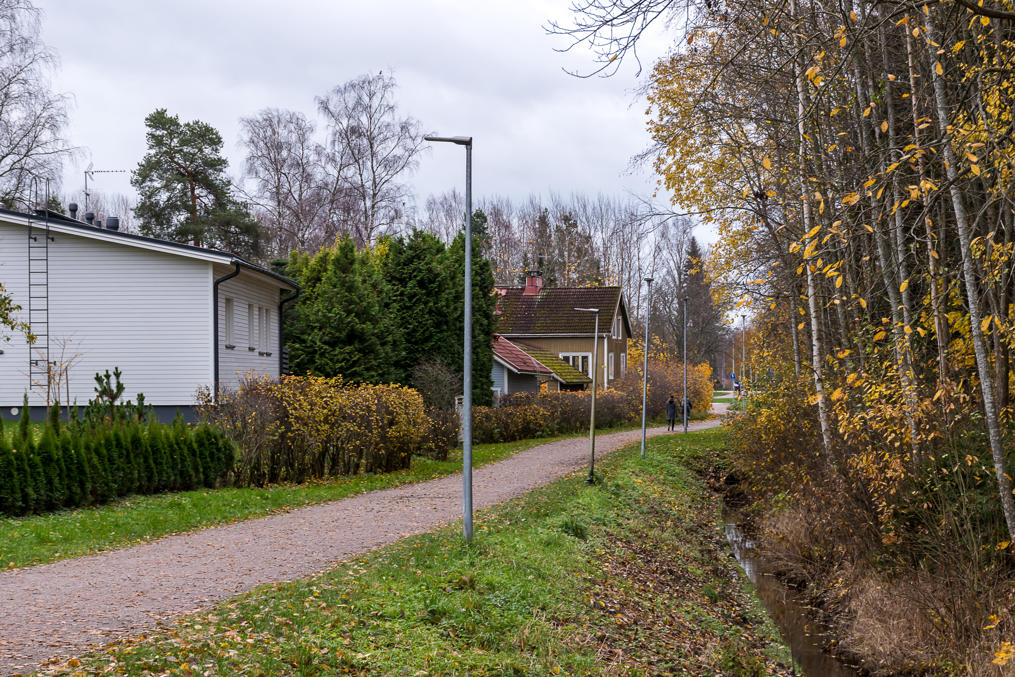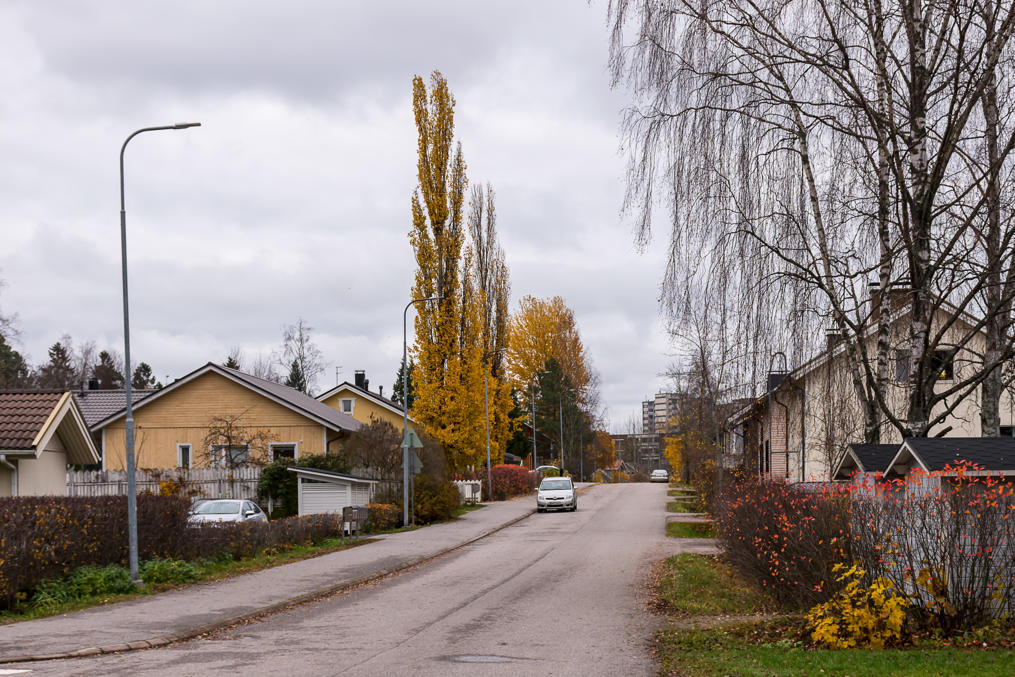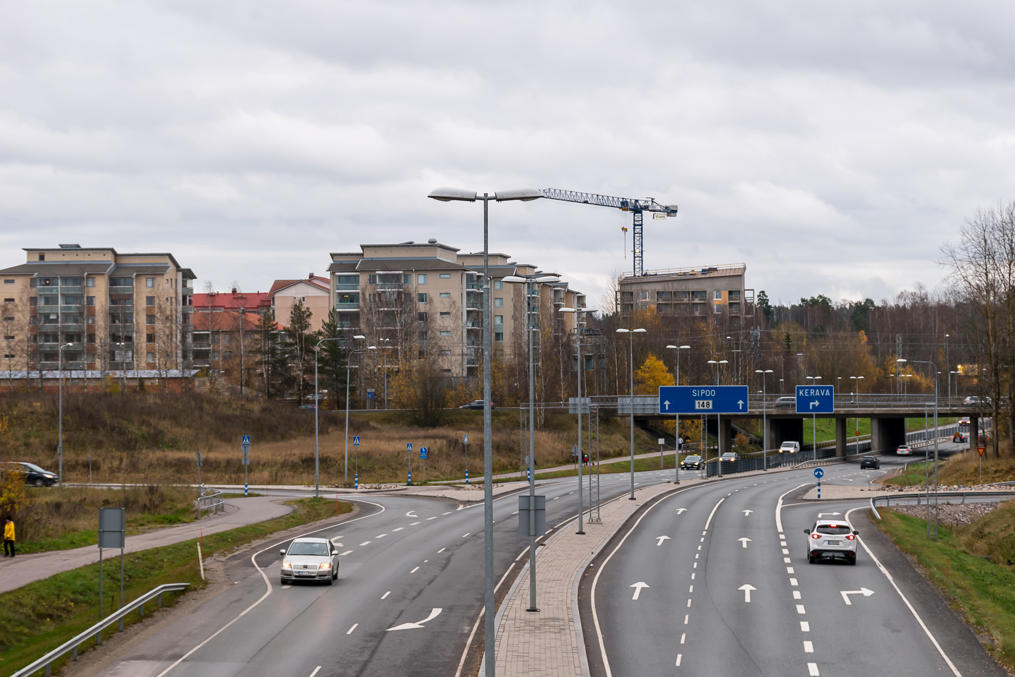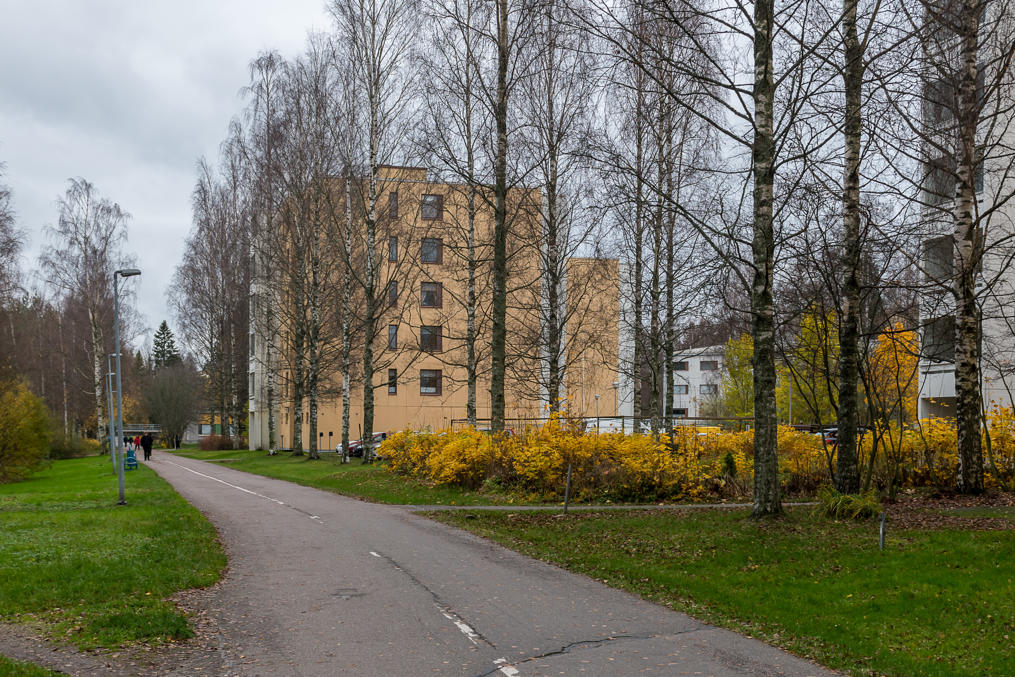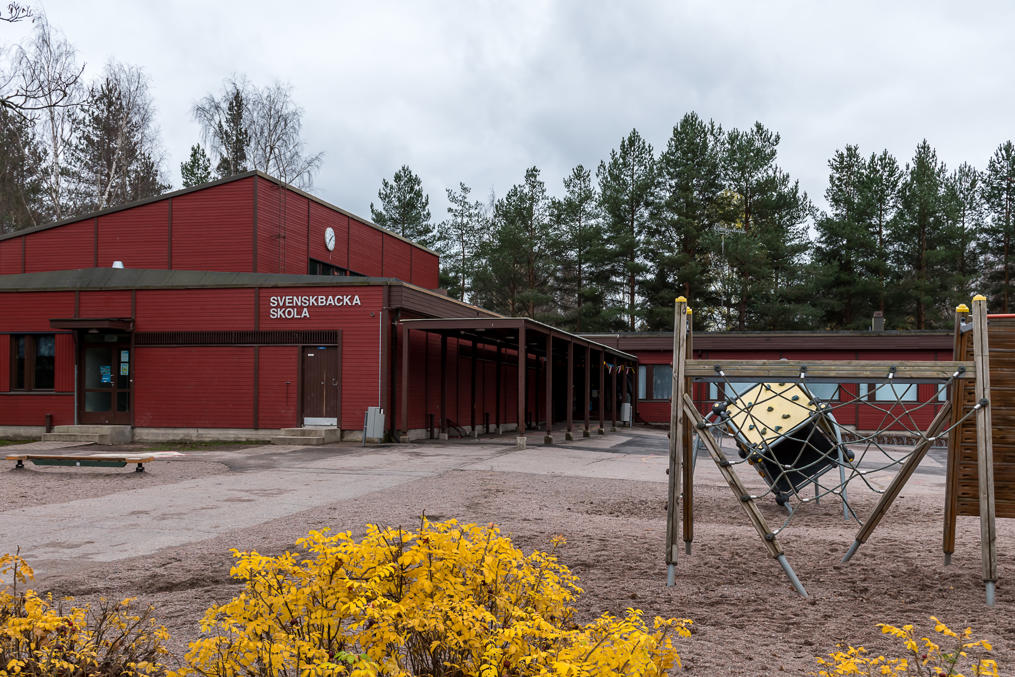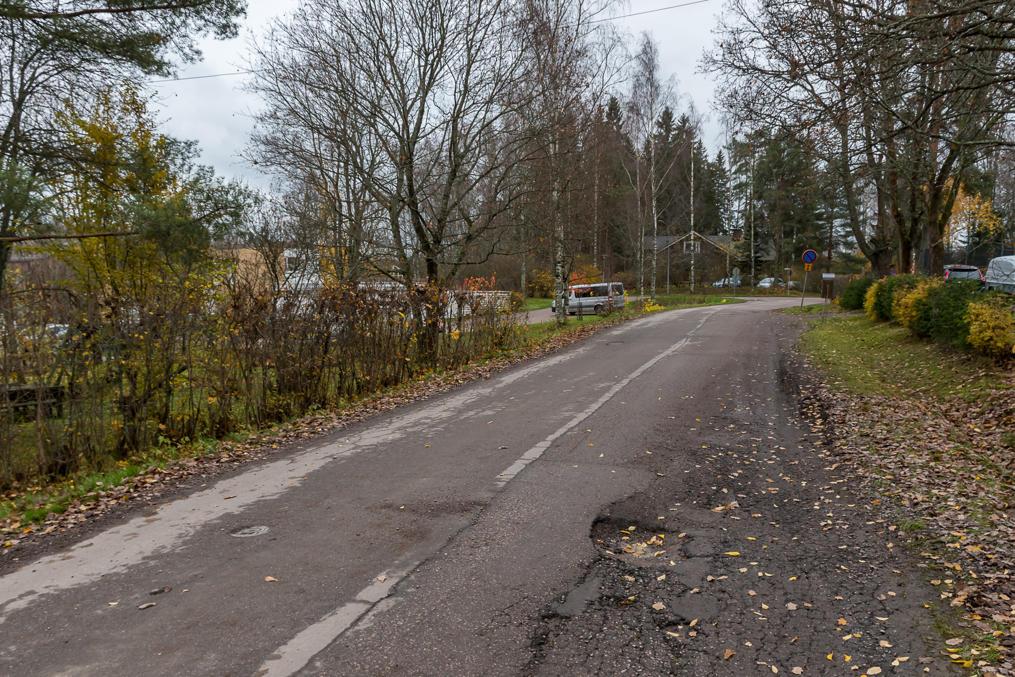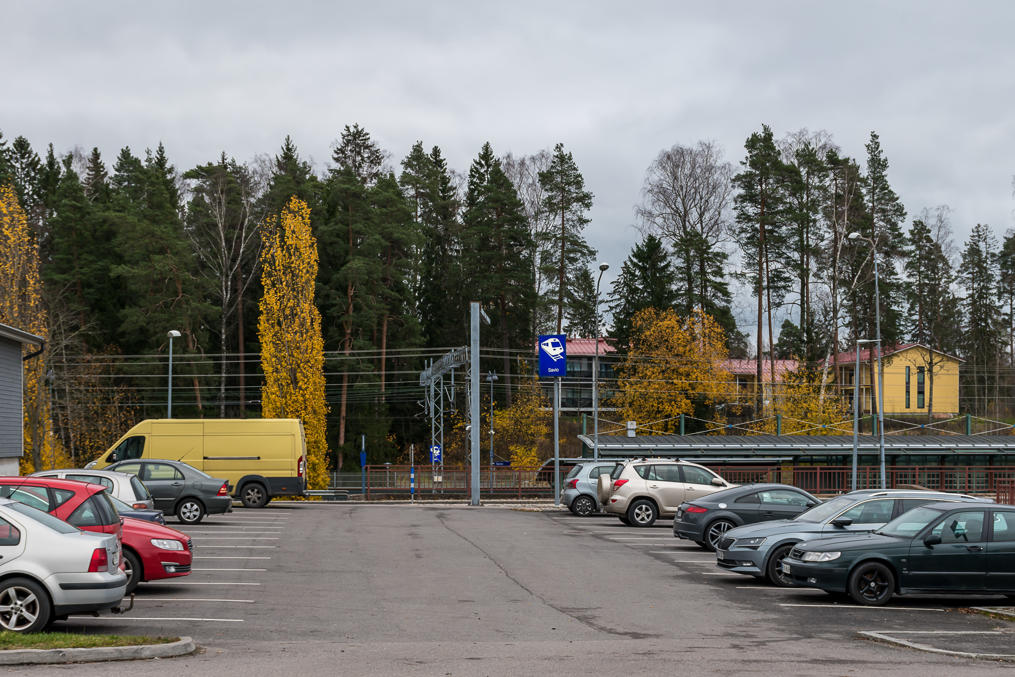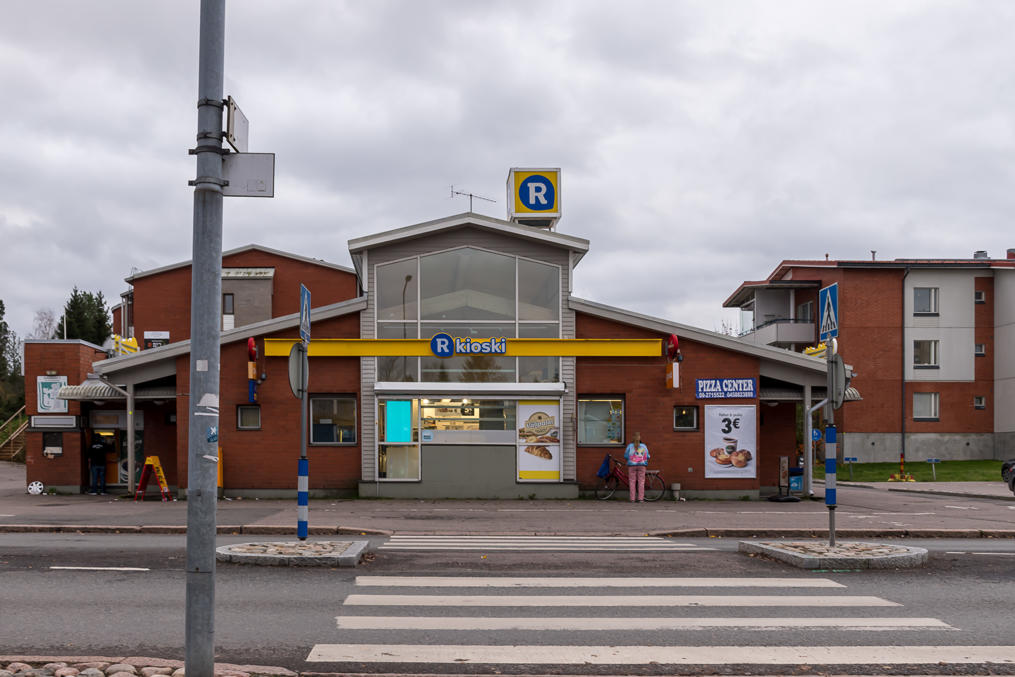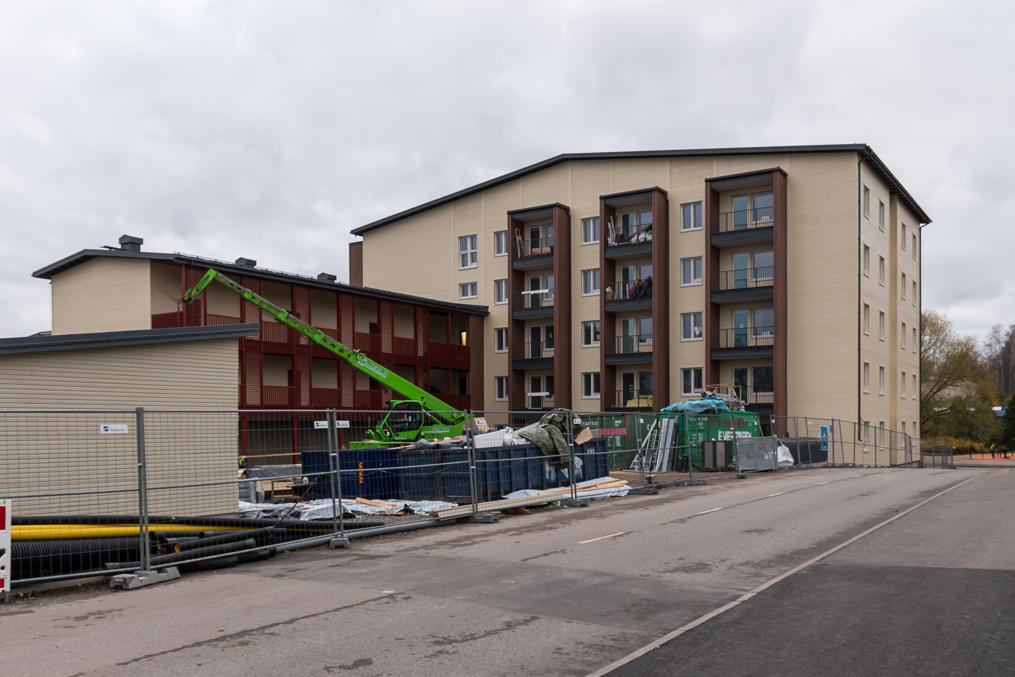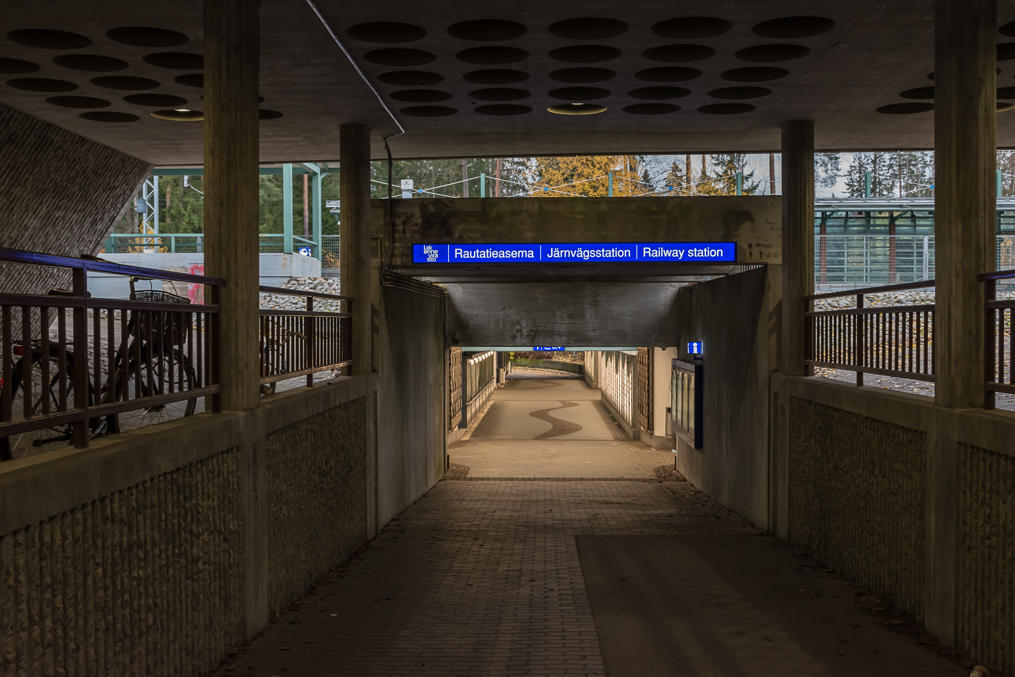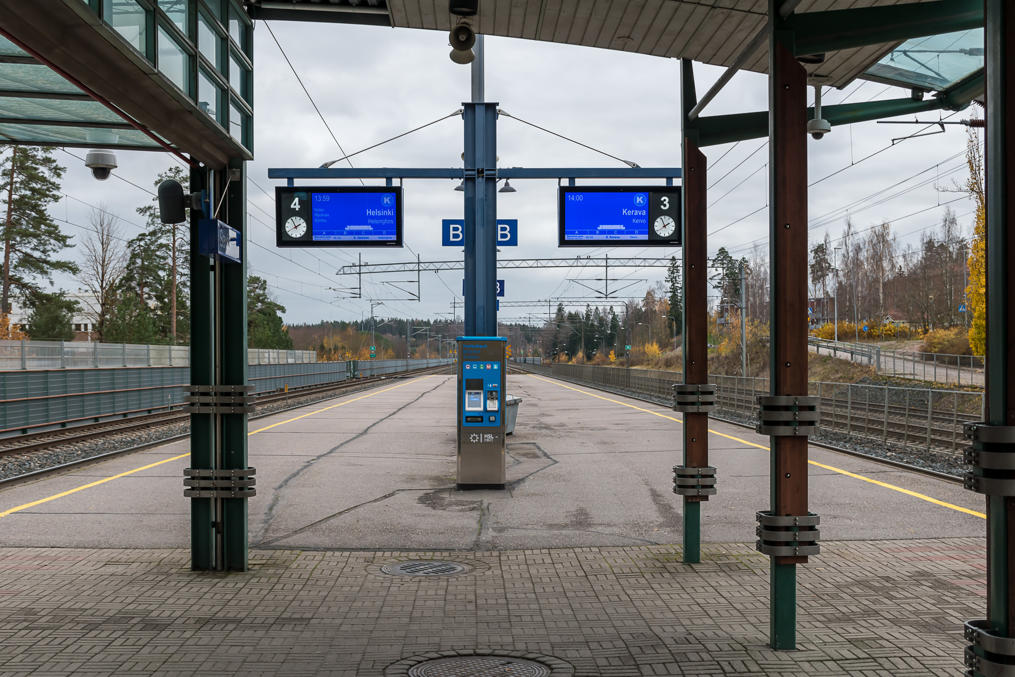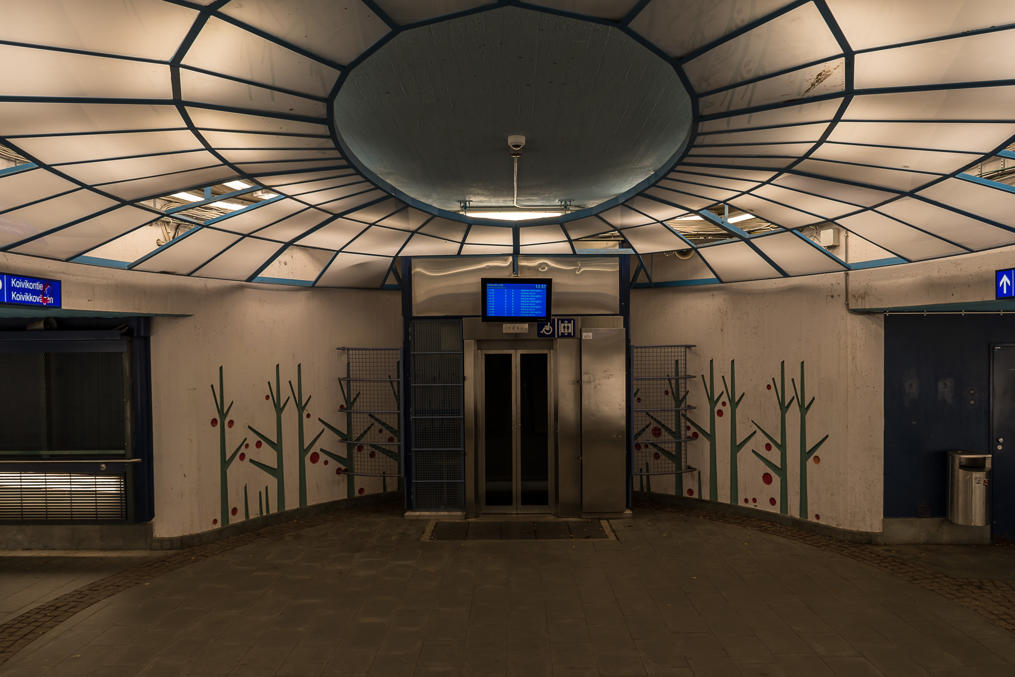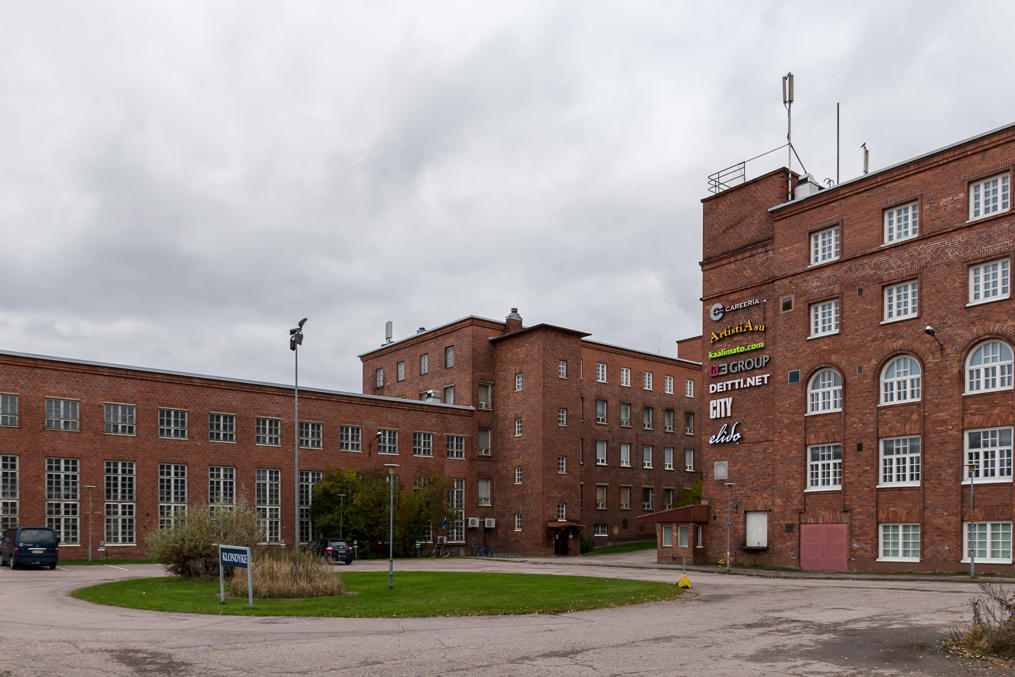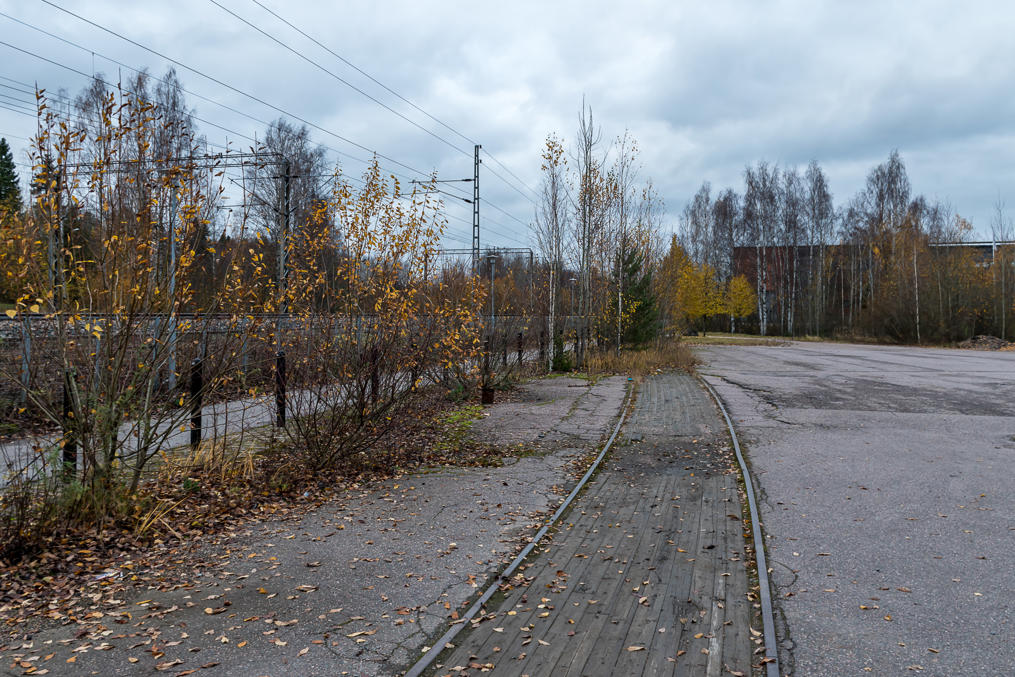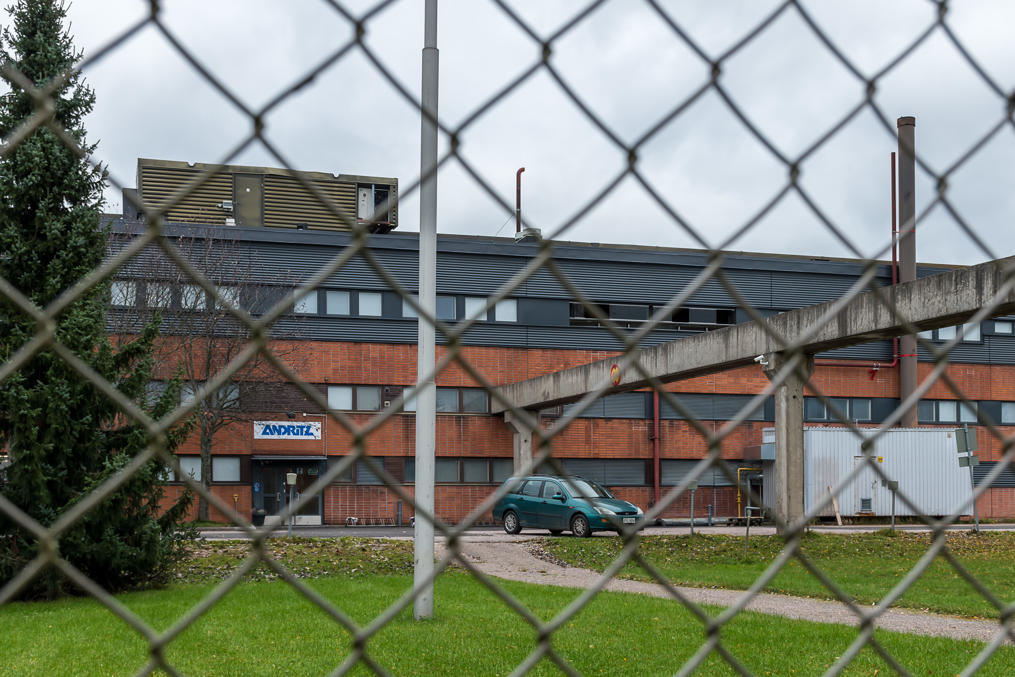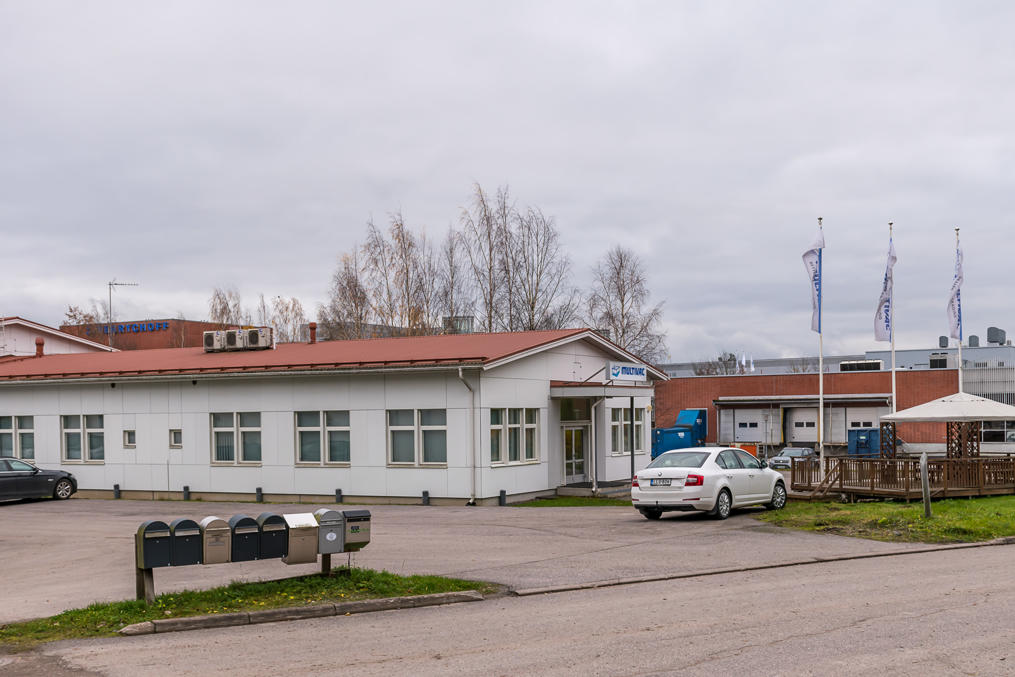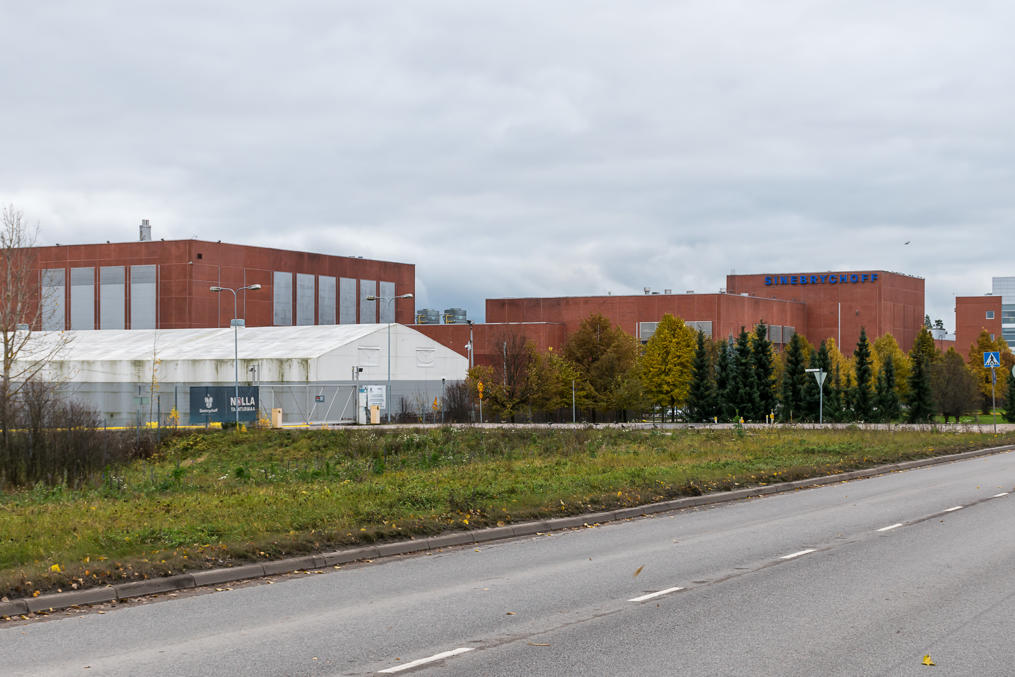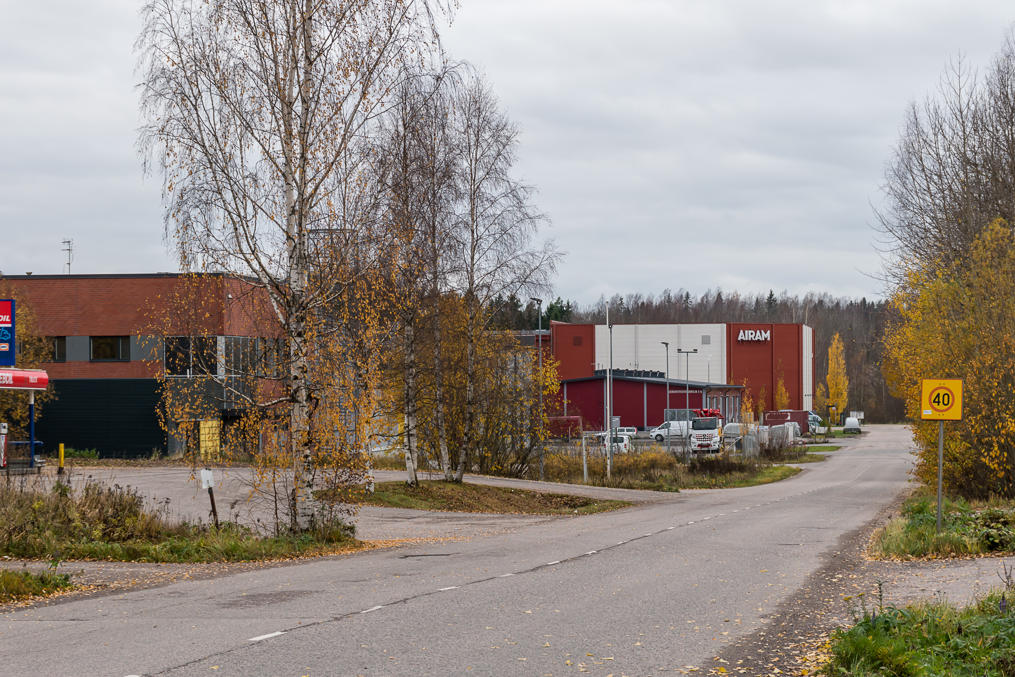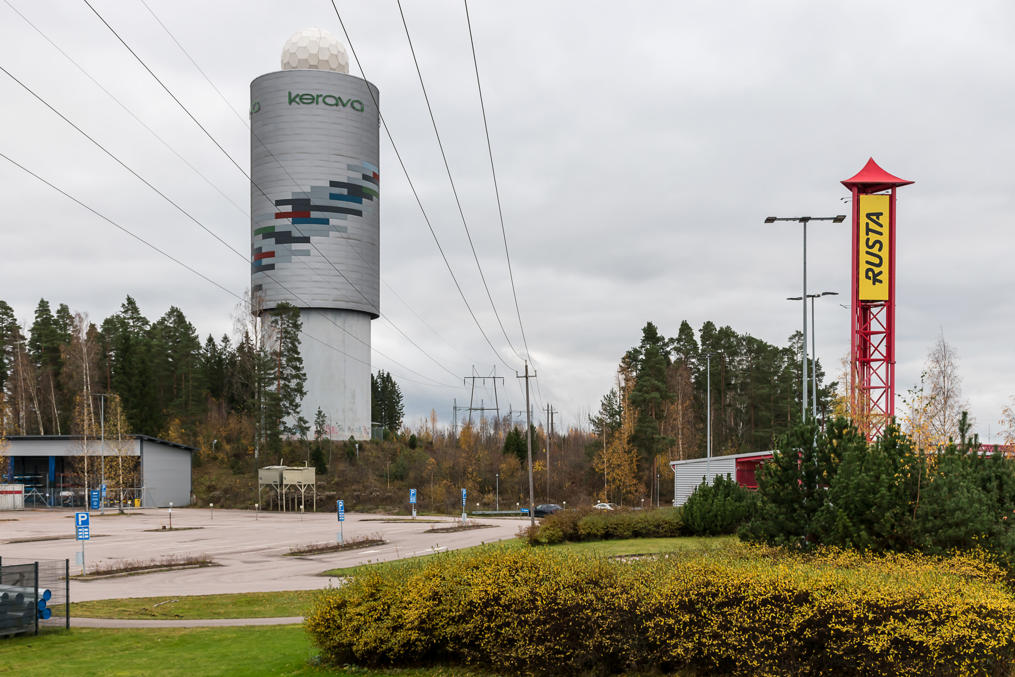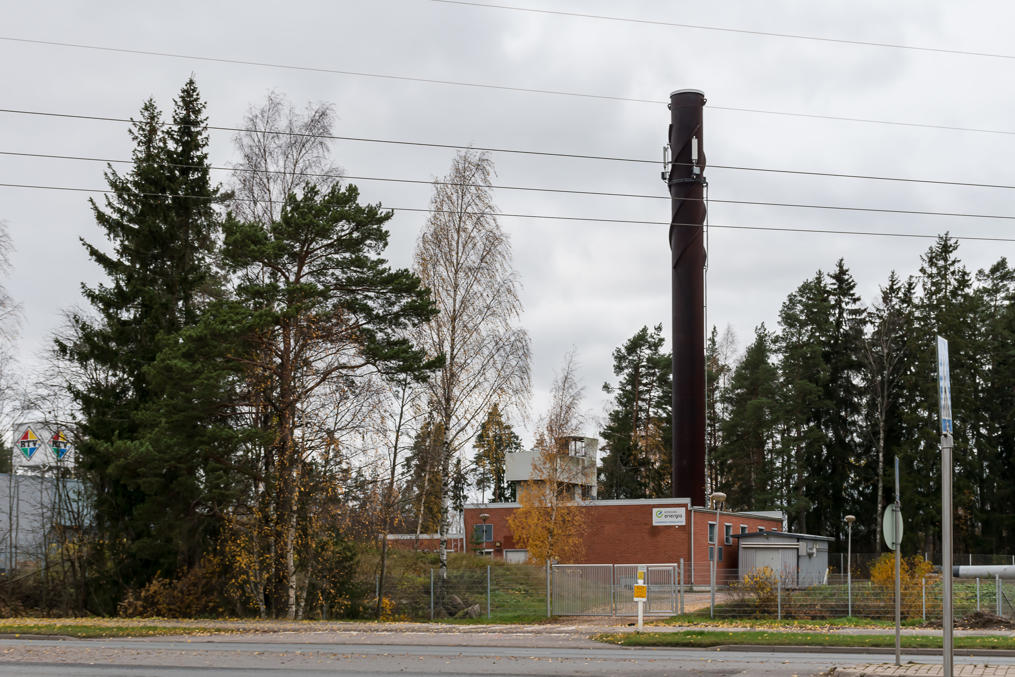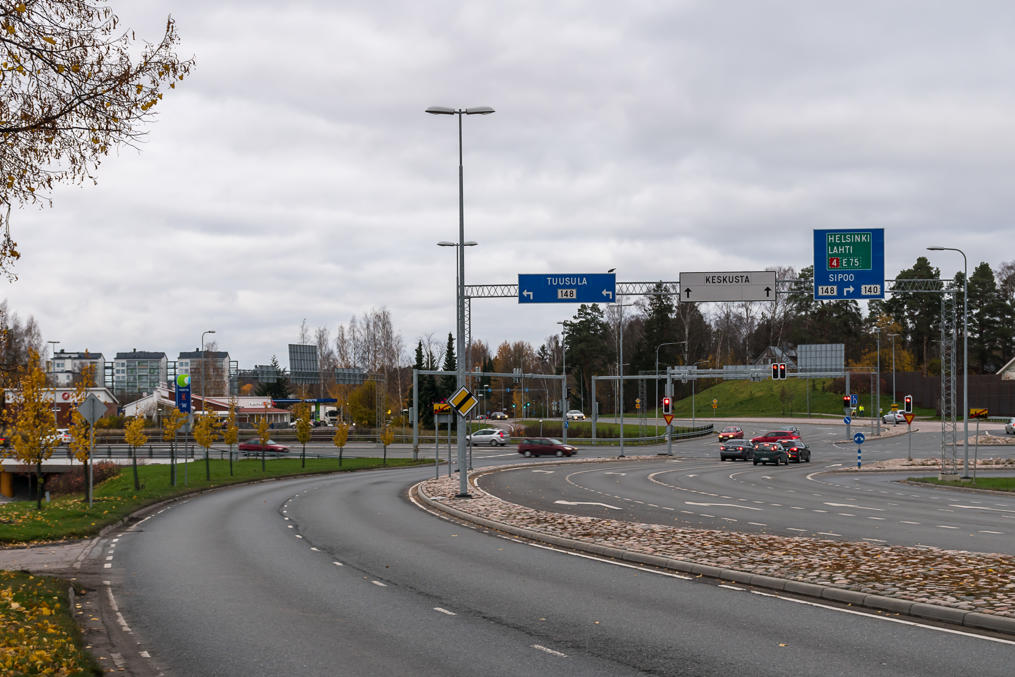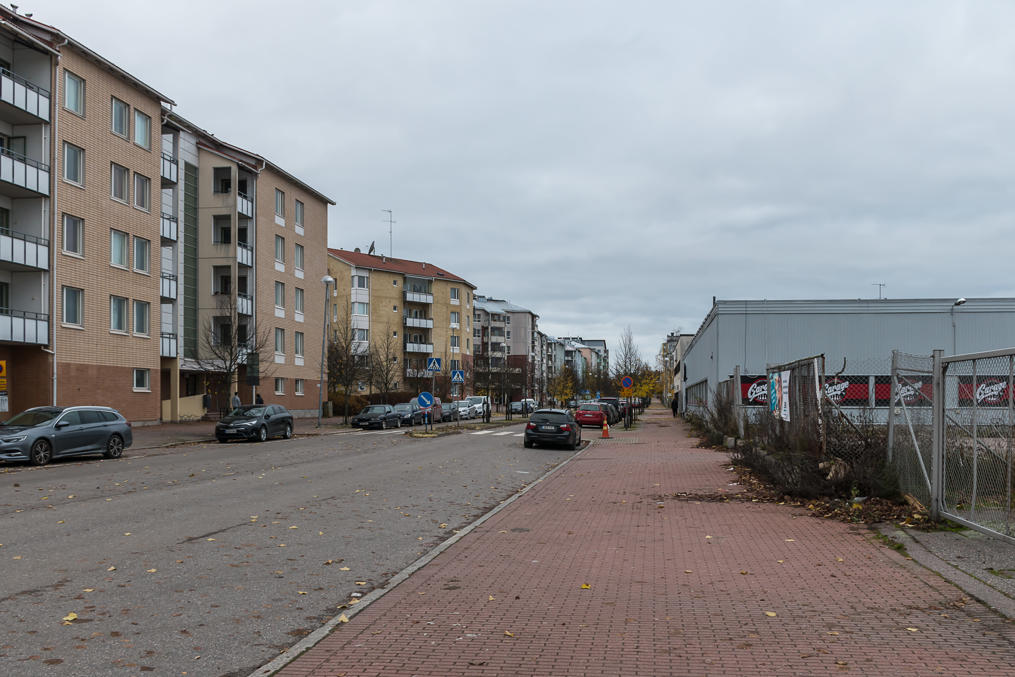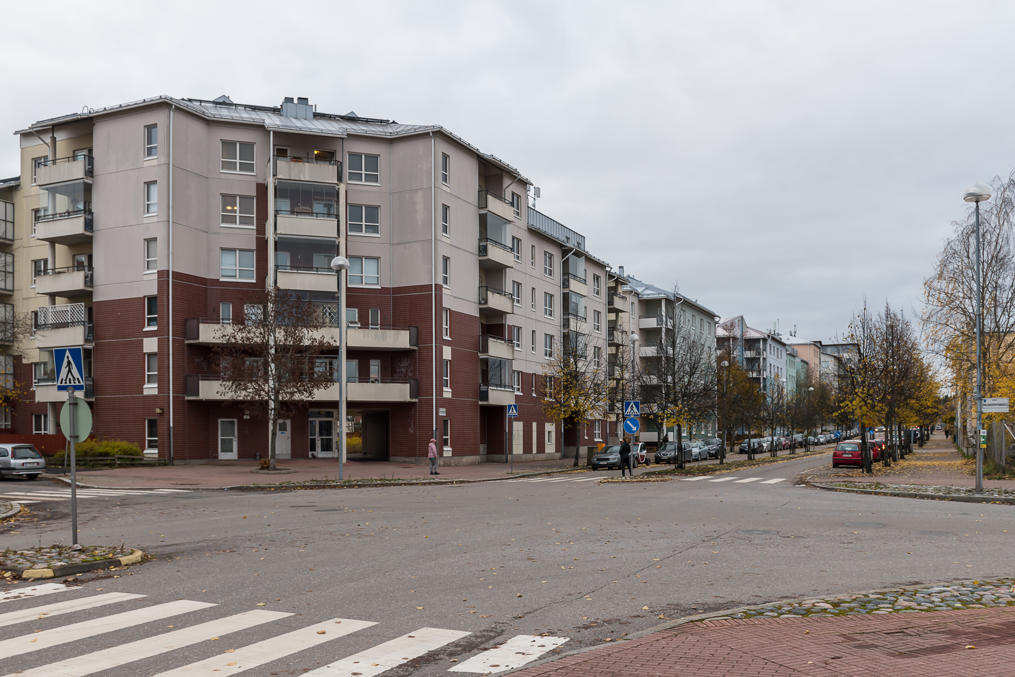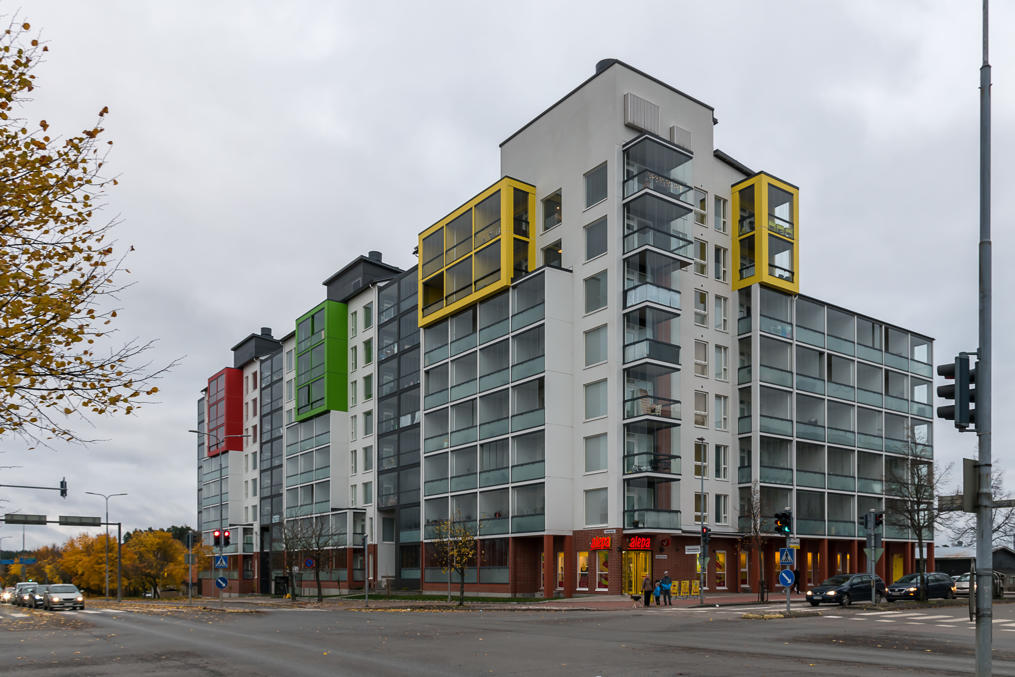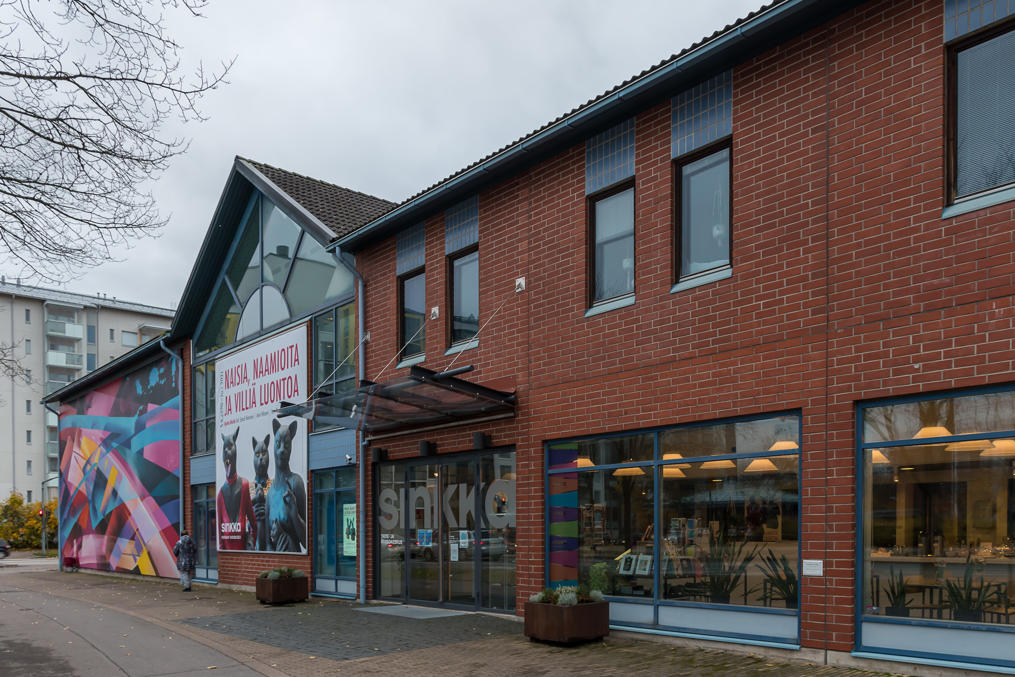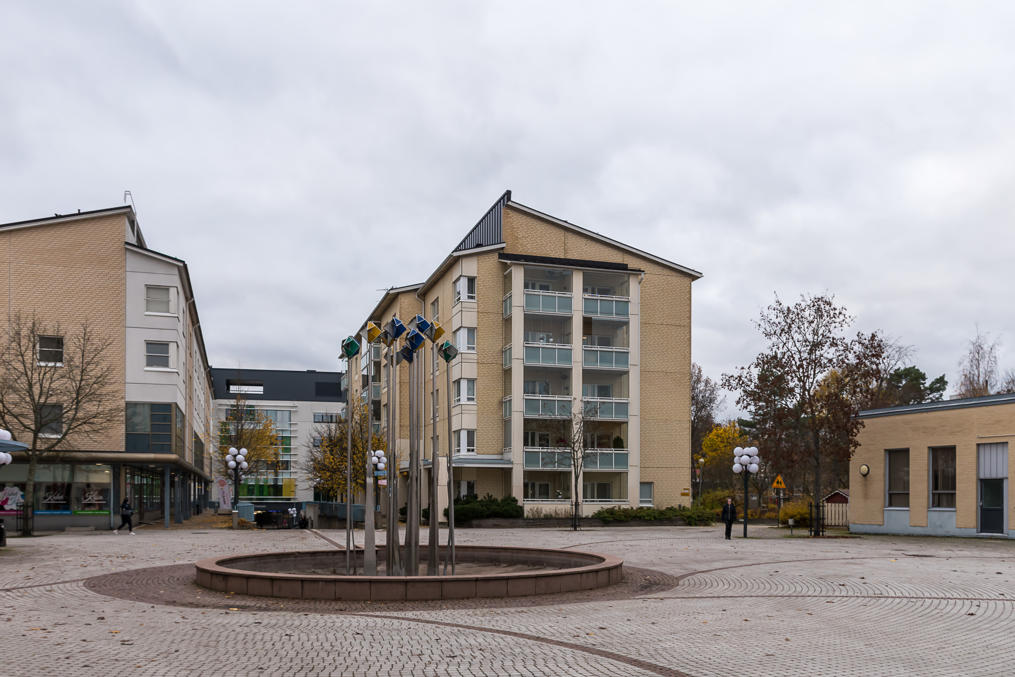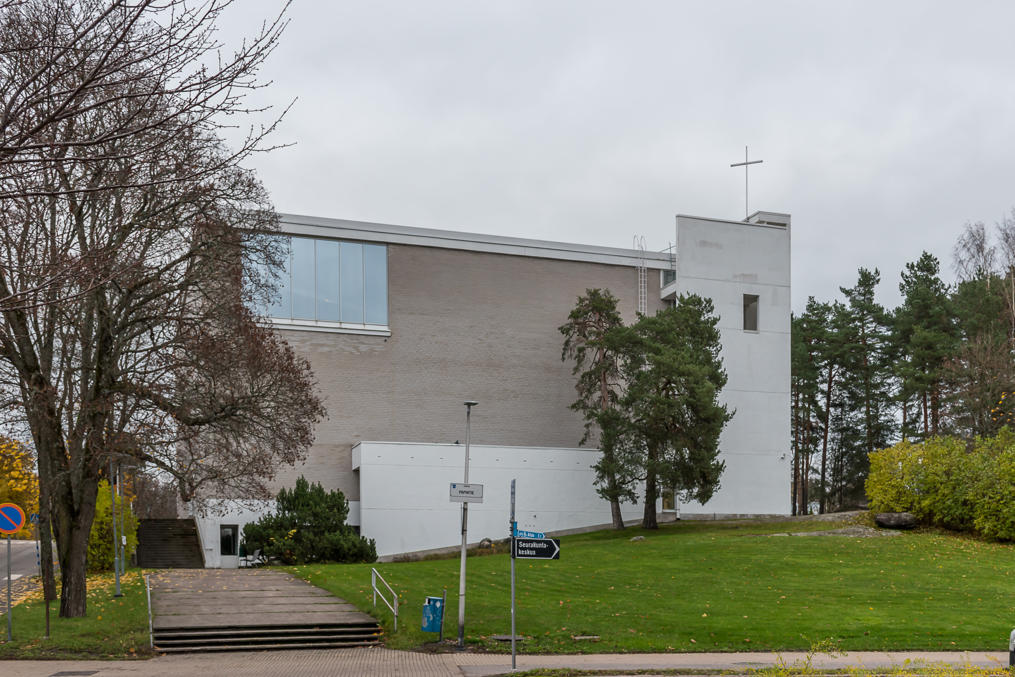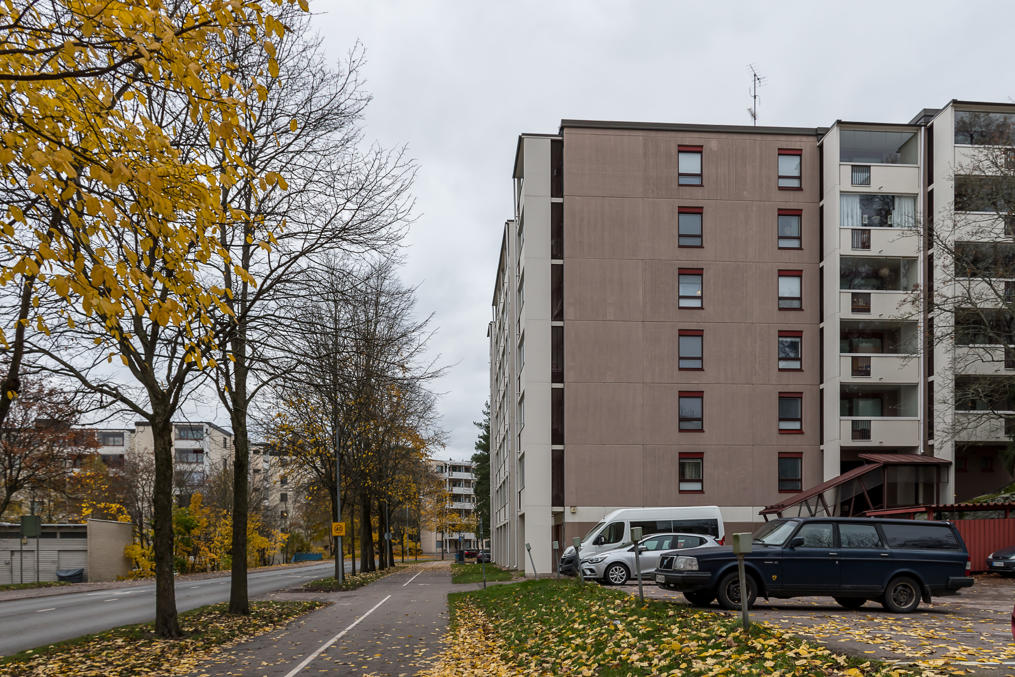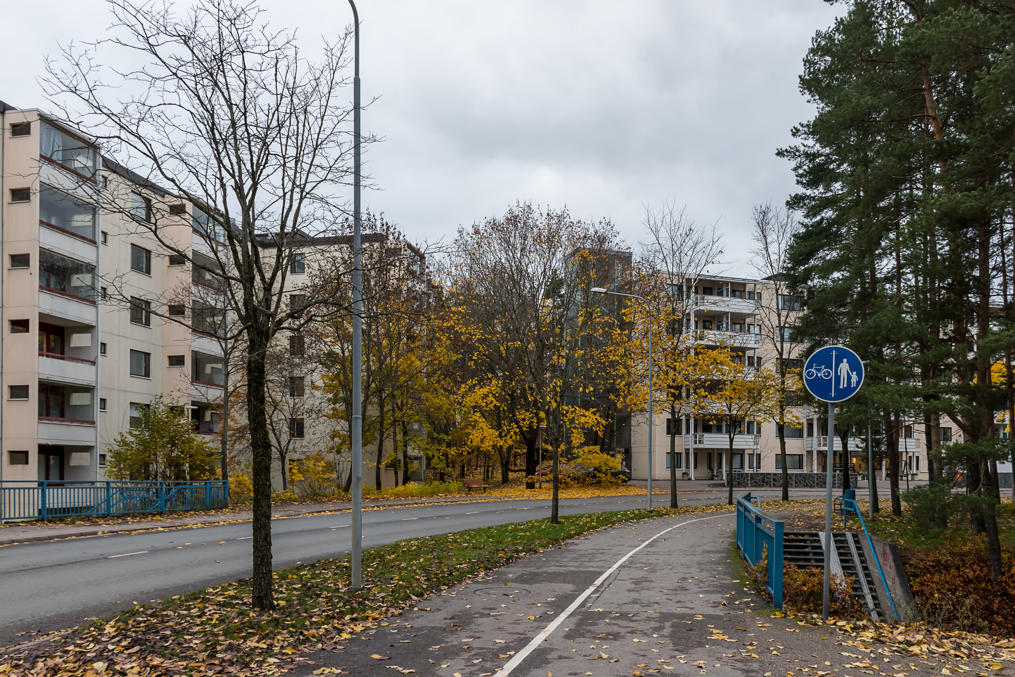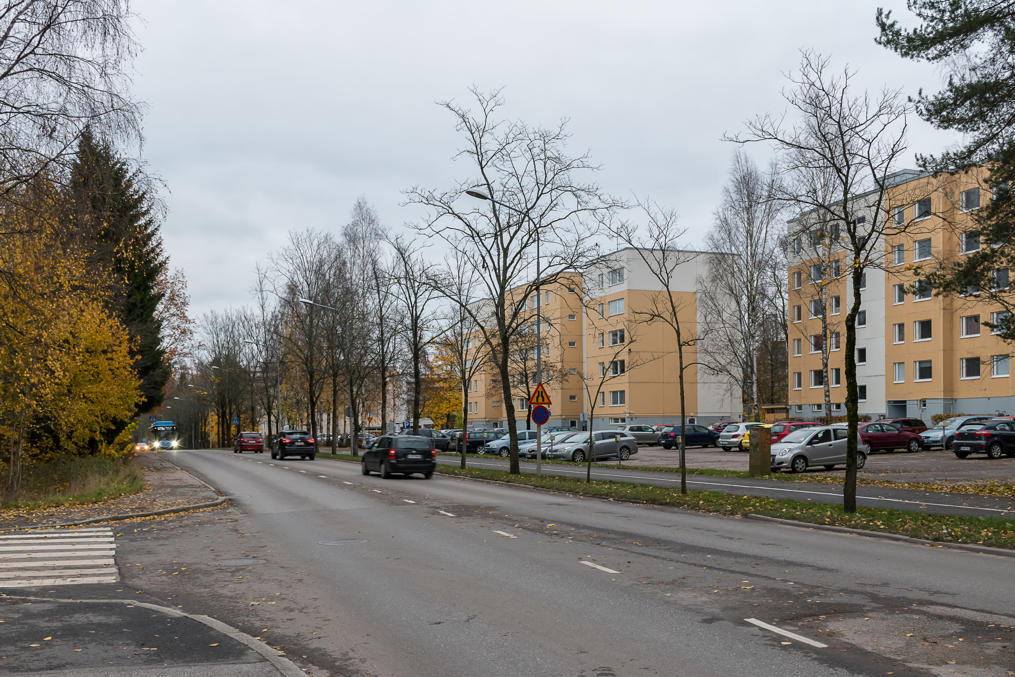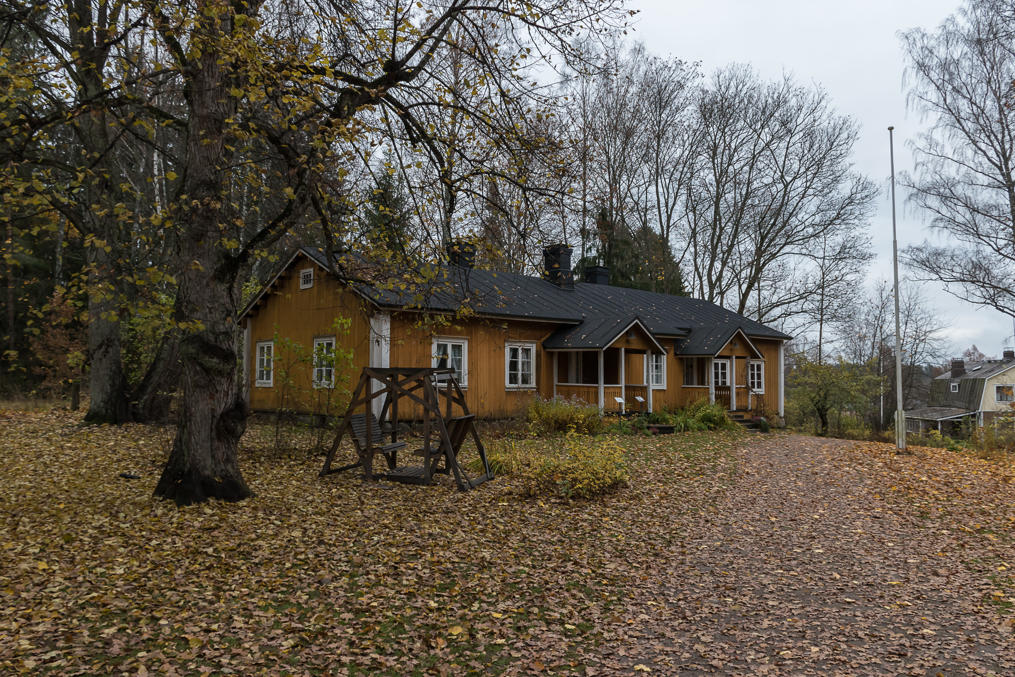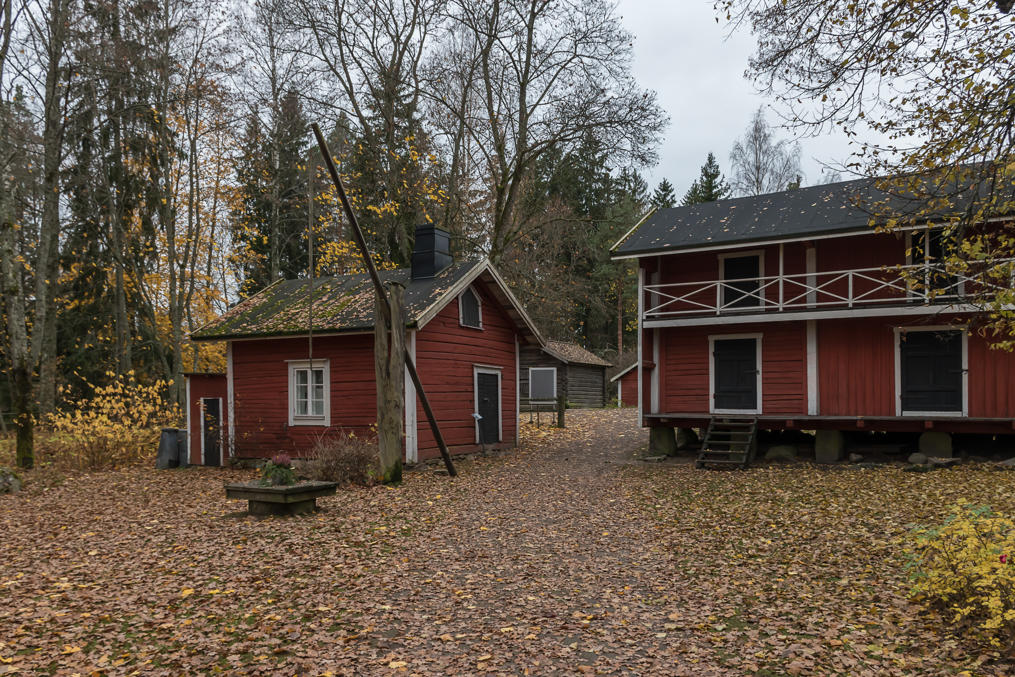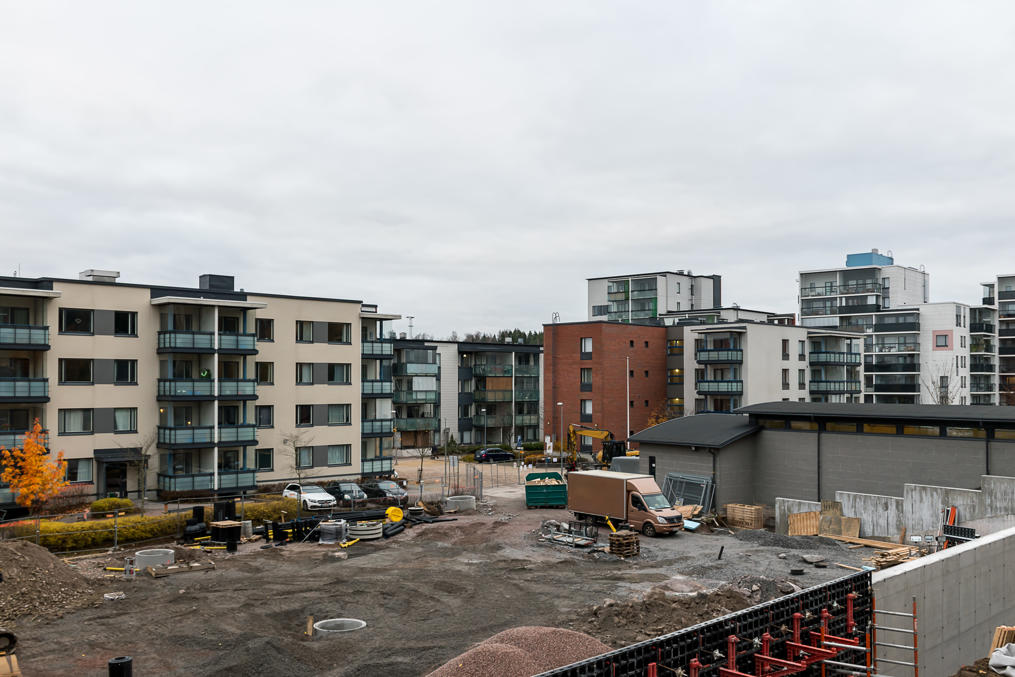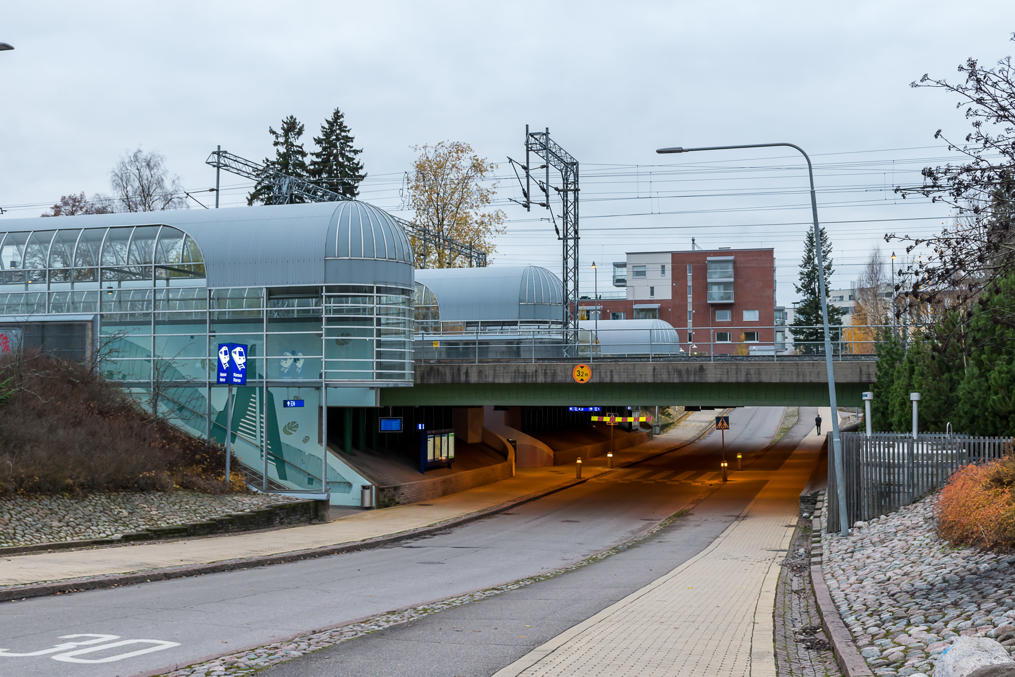Kerava (Swed. Kervo) is one of the multiple smallish towns around Helsinki, so-called kehyskunnat ("surrounding municipalities"). Kerava is located in Central Uusimaa, directly to the north of Vantaa and the Capital Region area (Helsinki+Espoo+Vantaa) which is the core urban area of Helsinki. Sitting by the Main Railroad (Päärata) of the country Kerava along with Kirkkonummi in the west are the only kehyskunnat which have regular tightly scheduled commuter train connections to Helsinki, where Helsinki area public transport (HSL) tickets are valid.
Kerava is a modest town and has neither an eventful history nor any major sights. Like for many other towns, the railroad was pretty much the sole thing that kickstarted Kerava's development. Before the railroad (in fact the first railroad in Finland, Helsinki-Hämeenlinna) came in 1862, this was just a small part of Tuusula parish (from which the neighboring Järvenpää likewise split; Tuusula's modern center, Hyrylä, is just a few kilometers west of Kerava), with a not particularly notable Kerava manor and two villages, Ylikerava and Alikerava (Upper and Lower Kerava), along the fairly minor Keravanjoki river, that flows to the south and into Vantaanjoki at the modern Helsinki municipal border. With the railroad however already in 1869 came a cement factory (the first one in Finland) and a few brick factories, and it only continued from there. The best known early Kerava industry perhaps was a carpentry factory, which among other things manufactured furniture for the House of Parliament of Finland; the very simple coat of arms of Kerava, showing just a carpentry dovetail joint, refers to those times. Already in 1870 Kerava became a junction station when a railroad to Porvoo (originally a private line) branched from it. However unlike e. g. Hyvinkää or Riihimäki Kerava never actually developed major railroad-related infrastructure (like a shunting yard or railway works).
In 1920 Kerava split from Tuusula into an independent municipality (market town, kauppala), having a bit over 3000 residents at the time. In 1970 it became a full city. Towards the end of the 20th century it assumed the role of an outer Helsinki surburb and began growing rapidly, like other kehyskunnat. However industry still plays a major role here as well. Kerava industry is nowadays mostly "new" plants, boring-looking gray boxes that were built here in a Helsinki outer suburb (or moved here from old industrial areas of major cities) so that they on one hand would have space to physically grow and good logistical connections, and on the other hand access to the workforce concentration of the Capital Region and other kehyskunnat. This phenomenon of course is not exclusive to Kerava. The best known companies that have production in Kerava are food industry, Sinebrychoff (beer and soft drinks) and Kokkikartano (ready-made meals); there is however engineering too, for example Metos which manufactures professional cooking equipment.
Modern Kerava has a population of about 37,000, making it the 30th biggest in Finland; however, it remains the 5th smallest Finnish municipality by area, a bit less than 31 sq. km. Kerava (like Järvenpää which is the next city to the north, slightly larger) was split from Tuusula in quite small borders, and includes nowadays a lot less surrounding farmland and forest areas than is common for Finnish cities (even for Helsinki itself). The distance to Helsinki center as crow flies is about 28 km.
As many as three other railroads split from the Main Railroad at Kerava now. The most important one is Kerava-Lahti railroad (Lahti bypass, Lahden oikorata) branching to the northeast, built in 2006 to straighten the rail connection from Helsinki to Eastern Finland and Russia. This is the latest major (76 km) rail line to have been built in Finland, and it is built to the highest standards in Finland; geometry-wise it allows even 300 km/h speeds, although the track bed structure is built to also accomodate freight trains and would not fare well with 300 km/h passenger trains, and in any case there is no rolling stock in Finland that would allow speeds over 220 km/h and no plans to acquire it. Vuosaari railroad branches to the southeast and goes to the Vuosaari harbor, where all freight operations of the port of Helsinki are now concentrated. A 19 km line was built in 2008; there was no way to build it through densely built-up Vantaa areas at this point, and so it dives under it into a single 13.5 km long tunnel (Savio tunnel), which is the longest railroad tunnel in Finland, although few people are even aware of its existence. Finally, old Porvoo line branches to the east. It is awkwardly traced and so couldn't compete with bus transport to Porvoo; passenger traffic was stopped in 1981. Most of the line with its spur Olli-Sköldvik is however electrified and in busy use by the Neste oil refinery at Sköldvik (Kilpilahti) near Porvoo. Olli-Porvoo section in turn is nowadays used only by museum trains, and is the only normal gauge section of Finnish railroads that is entirely designated as a museum one.
For car and bus traffic, a motorway, National Road 4 (Lahti Highway, Lahdenväylä), links Kerava to Helsinki pretty well.
Since there's not much special about Kerava, let's just have a walk around it with no particular direction, and have a look at an ordinary Finnish city in some nice autumn weather. In truth myself I'm a bit interested in Kerava as a possible place to move to from Espoo, since housing there is significantly cheaper, time to Helsinki center by train is not much bigger (and I'm still doing remote work anyway because corona), and it actually has a bit more of an actual city feel than residential areas of Espoo.
1. The K-route (Helsinki-Kerava) commuter train took us from the center of Helsinki to Kerava in 34 minutes, quite a bit longer than a R- or Z-train would (21-22 min), because K-trains stop at all stations (13 between Helsinki and Kerava) while R- and Z-trains only stop at Pasila and Tikkurila. K-trains however run as often as every 10 minutes in rush hours (R- and Z-trains have 30 min and 60 min intervals correspondingly). This is possible because between Helsinki and Kerava (29 km) the Main Railroad has 4 tracks, of which two are reserved for commuter traffic (K- and I/P-trains), while the other two are used for suburban traffic (R-, T-, D-, Z-trains) and long-distance trains. The 3rd and 4th tracks are known as Kerava Urban Railroad (Keravan kaupunkirata); they were built rather gradually between 1972 and 2004, not as a single project.
2. Kerava station building dates from 1878, by Knut Nylander. It has been somewhat expanded and rebuilt through years. The station nowadays has a cafe, an R-Kioski store and a small waiting room open only on weekdays, 7-17. Since no long-distance trains stop at Kerava now, the waiting room is not really necessary.
3. Well, let's go to the city. Kerava center is located pretty much just to the west of the station.
4. Underpass.
5. Curious decoration at the station. I'm not sure if this is a part of a real steam engine or just a replica; probably the latter, as I'm also not sure if a steam engine number 2002 ever existed, and this likely refers to the year when the station was essentially mostly rebuilt from scratch. The station does actually have a real museum steam engine, and of an uncommon model too (Hv3), but it is on the other side of the station and somehow I forgot to take a picture of it.
6. Local buses depart from behind the station. Kerava has some local buses and bus connections to Nikkilä (Sipoo center), Hyrylä (Tuusula center) and a few places in Vantaa. The schedules aren't especially tight however; individual routes depart once in 30 minutes at best. Kerava (along with Tuusula) belongs to the D tariff zone of Helsinki area public transport (HSL).
Kerava is also one of the few locations where HSL is currently introducing electric buses instead of ordinary ones; all buses that you see here are electric ones. I haven't noticed any charging infrastructure however, so I'm not sure where they recharge.
7. A look at the station from an overpass. From left to right: track 1 for suburban trains in Helsinki direction; tracks 2-3 for long-distance and freight trains bypassing the station; track 4 for suburban trains in Riihimäki/Tampere and Lahti directions; track 5 for commuter trains that have an end station here; track 6 only used by museum trains to Porvoo. A Riihimäki-Helsinki suburban train is just stopping on track 1. These use rolling stock different from commuter trains.
8. The overpass has been recently renovated and got some cat figures for no apparent reason.
9. Two older-looking buildings (a fairly rare thing in Kerava) by the overpass, Nikkarinkruunu office to the left (the local municipal rental housing company) and music school to the right. A street name sign with a non-typical design can be seen also; Kerava actually rents some small space on them for ads. An uncommon thing in Finland, but I've seen such signs in a few other towns too.
10. And an art school close by too, by a small hill known as Aurinkomäki (Finn. Sunny Hill). The small house from 1900 is the only one of its kind remaining on the formerly built-up hill.
11. Otherwise Aurinkomäki is a small park now.
12. The central street parallel to the railroad is called Paasikivenkatu, Paasikivi Street. J. K. Paasikivi (1870-1956) is best known as the post-war President of Finland, who oversaw the era of the great Finnish reconstruction. I talked about his role as the mediator between Finland and the USSR quite recently too. Paasikivi was not originally from Kerava but bought a manor here called Jukola in 1917, and owned it until well into his presidential years, until 1953. By all accounts he was a very meticulous owner, and the manor prospered under him. The former manor is now owned by Paasikivi Youth Village Foundation (Paasikiven Nuorisokylän Säätiö), a child protection organization. It is located in Ahjo in the east of Kerava beyond the motorway, an area that I didn't visit.
13. A monument to Paasikivi in front of the city library. The modern building dates from 2003.
14. A trash can for used syringes does raise certain suspicions, although this was the only one I saw in the city. Kerava does have a certain reputation as a junkie town. From what I was able to gather, this is mostly limited to older apartment blocks east of the railway station. Still, Kerava is a calmer place than Helsinki (and about as calm as Espoo) when you look at the actual crime statistics. Of course you can find online all kinds of claims about Kerava from actual Finns, but that's pretty much true of every city, and anyway what is considered a "restless area" in Finland would be considered perfectly normal in virtually any other country in the world :)
15. A small park behind the library, with a traditional sign pointing towards sister cities. The Russian sister city is Vladimir, in 1007 km. Fairly typically, the Russian sister city dwarfs all others in its size, being about ten times as populous as Kerava itself.
16. Keuda House, the local culture center with a concert hall and a small cinema.
17. Volmari house is named after Volmari Iso-Hollo (1907-1969), a Finnish runner and Olympic champion, who lived in Kerava for most of his life. A monument to him can be seen to the right.
18. The very center of Kerava, right by the central market square, is dominated by a huge older apartment block, far higher than any other building nearby. At 16 floors and 60 m height, these are solidly in the list of the tallest buildings in Finland, and in fact at the time of construction (1975) were the tallest residential buildings in the country. The low building in the foreground is not related to the residential towers; it is the municipal administration building.
19. Kerava's central pedestrian street, Kauppakaari (Finn. Market Arc).
20. Kerava's Prisma supermarket is open around the clock, rather surprisingly for a smaller town. It likely helps that here Prisma is right in the center, easily reachable by foot for much of Kerava, while normally such big stores are located in areas difficult to reach without a car.
Supermarkets open around the clock is a fairly new and rare phenomenon; as is well known, Finland used to have store opening hours regulated by a special law. The law in question was abolished in 2016, and since 2017 some Prismas started working around the clock, although to this days the number remains quite low. In Uusimaa this is currently the only 24h Prisma outside Helsinki and Espoo.
21. K-Citymarket, Prisma's main competitor, and the local McDonalds nearby.
22. Karuselli (Carousel) shopping center and some night club.
23. At the end of the pedestrian street.
24. Car traffic through the center is routed through the Keskustan Kehä (Finn. Central Ring) road.
25. A bit depressing view of the central residential towers.
26.
27. Good pedestrian and to some extent biking infrastructure is quite normal for Finnish cities, but Kerava tries to go a bit further than most. For example, quite many streets have dedicated bike tracks, in the center also usually distinguished by differently colored cobblestones instead of just a line painted on the pavement.
28. At this intersection walking/biking routes are also nicely separated from the road itself in different levels.
29.
30. Autumn leaves are not being removed well everywhere, but honestly I'm alright with that, it looks pretty nice.
31. Old Kerava swimming pool was renovated (in practice mostly rebuilt from scratch) in 2016-2019, and now is apparently a very nice one. It also has an outdoors section (maauimala) which hasn't been renovated yet; these are relatively rare in Finland and most of them are of course open only outside winter months.
32. A small bar which looks like a former taxi station.
33.
34. The city health center. Outside normal Monday-Friday working hours Kerava residents need to go to Peijas hospital, the hospital of Vantaa. That hospital is easily reached by commuter train, and there is a more direct bus from Kerava too.
35. Now we've reached Kilta, a classic 1970s lähiö-area (isolated residential block with pretty basic prefab housing). In truth as far as lähiö blocks go, Kilta seems a decent one. All parking lots here are moved to the outside of the block.
36.
37.
38.
39.
40. Kilta school.
41. Now we're walking through Sompio, which is mostly a detached house area. The name for some reason conincides with the name of a vast area in Lapland.
42.
43. On an overpass above Road 148 (Tuusula-Kerava-Sipoo-Sköldvik).
44.
45. A small Swedish-language school. Only 1.2% of Kerava is Swedish speaking, but this is still above most major Finnish cities, where this percentage is normally 0.1-0.5%.
46. Walking towards Savio area. Some small residential streets here are in less than perfect shape.
47. Savio school dates from 1930.
48. Savio station is the other station in Kerava where commuter trains stop. Only slower commuter K-trains, though; faster R-/Z-trains don't, and so getting from there to Helsinki would be quite a bit slower than from Kerava center, even though Savio, being in the south of Kerava, is a little bit closer to Helsinki by distance.
49. Savio is currently a mostly unremarkable place and has pretty minimal infrastructure.
50. However new residential construction is pretty active here.
51. Station underpass.
52.
53. Savio station is built in pretty much the same style as the main Kerava station.
54. On the eastern side of the Savio station is a large former industrial building, named Klondyke house. It is located at the place of the first cement factory of Finland, mentioned above. This building has been in use since 1913, and for most of its history (1927-1985) it housed a rubber factory, a part of the well-known Nokian company. The city of Kerava, which has been the owner of the building since 2003, in fact successfully sued Nokian a few years ago to compensate for the pollution in the area (apparently Nokian had been unlawfully burying some rubber waste in the area). Nowadays the premises are mostly in office use. Of the tenants Kaalimato.com might be the best known as the biggest sex toy online retailer in Finland.
55. Abandoned rail spur to the rubber factory.
56. Rubber factory aside, this part of Kerava named Alikerava still houses most of the city's industry. Andritz for example is an Austrian company manufacturing some paper industry equipment, if I understood correctly.
57. Small industry.
58. Big industry: Sinebrychoff beer and soft drinks factory. Sinebrychoff is in fact considered the oldest Nordic brewery, the oldest Finnish food industry company, and the 3rd oldest Finnish company overall still in uninterrupted operation; it was founded in 1819 in Helsinki by a Russian businessman named Nikolai Sinebrychov (1789-1848). His father, from Gavrilov Posad in central Russia, already had a brewery in Ruotsinsalmi (future Kotka) in the 1790s, back when only the southeast Finland belonged to Russia; Nikolai was able to establish his brewery already in Helsinki, serving the Sveaborg sea fortress (where, yes, they were buying alcohol drinks in an organized way). The production was moved to Kerava from Helsinki in the 1990s, and Sinebrychoff has been owned by Danish Carlsberg since 1999. Sinebrychoff also owned the Pori brewery, dating from 1853 and famous for the Karhu brand, but the production in Pori was unfortunately shut down in 2009, and now all Sinebrychoff production is concentrated here in Kerava.
59. Airam has been known as a lighting manufacturer, but their last factory in Helsinki shut down in 2017 (it was one of the last ones in EU still manufacturing incandescent bulbs, for special custom orders) and now it only sells imported stuff.
60. Alikerava area is also home to some big stores.
61. Kerava water tower is visible from the motorway (which passes close by to the east) and serves as a landmark of the city for those passing Kerava by. It is actually quite new, built in 2008. Rusta, visible to the right, is a quite new brand for Finland; the Swedish Rusta company bought the Hong Kong department store chain, and changed their names to Rusta only this summer. (I have no idea why they were called Hong Kong in first place.)
62. This small building actually has a "power plant" sign, but for some reason I didn't find it at the Keravan Energia company website. They do boast about their bigger bio power plant (working on byproducts of forest industry), and the solar power plant which can also be seen while driving on the Lahti motorway. The solar power plant is quite small, with about 0.25 MW peak power, and of course Finnish conditions are not exactly solar power-friendly, so I suppose it was more of a marketing stunt. Nonetheless there are quite a few somewhat bigger solar power plants in Finland too, the biggest one at 5.9 MW peak power in Nurmo, Seinäjoki; an 11 MW peak power one is being built in Kalajoki. Kerava solar power plant actually works by renting out individual solar panels directly to customers for 4.2€/month. The average yearly output of one panel is 304 kWh, which costs about 10€. So basically you pay about 50€/year, get 10€ back as electricity produced, and the rest is your contribution to the glorious green future.
63. Crossing the Road 148 back.
64. Now we're walking to those "questionable" areas east of the Kerava railway station.
65. Looks indeed a bit depressing.
66. This one actually looks kinda like Russia.
67. A big new building.
68. Sinkka art museum, probably the biggest museum in Kerava. "Sinkka" means a dovetail carpentry joint, same thing that is on the city coat of arms.
69. A pedestrian street (actually the continuation, through a tunnel under the railroad, of the one in the center).
70. Kerava church was built in 1963 and looks pretty much like you'd expect a church from that era to look like. Kerava parish separated from Tuusula parish much later than the municipality itself did.
71.
72. This is not a busy street, but it has a pedestrian/bike underpass anyway; it's a direct pedestrian/bike route from the railway station to the east.
73.
74. A little bit away from the street, and we see a little detached house with a sign for "Navalon" and "Not Navalon", and a sign "Embassy of Navalon Republic". Huh?
A little googling reveals that the "Navalon Republic" is in fact a sort of an art project by Katti Koskinen, an artist living here in Kerava in this house. The "Republic" is a tiny artificial island, made of 2000 empty plastic cannisters and currently anchored in the sea waters at Lapinlahti by the coast of Helsinki center. The island has some vegetation, helped by a solar-powered irrigation system, and seagulls sometimes nest on it. The island is technically illegal but in its current location hasn't caused any complaints so far.
75. And down by the same road is the Kerava local history museum. Pretty typically for a smaller local history museum, it is just a preserved local farm, named Heikkilä. The farm existed since the 1500s until the 1920s, and the main building dates from the end of the 18th century. The museum, open only in summer and with free entrance, shows the life of a well-off peasant family in the beginning of the 20th century.
76. There are 14 buildings in the museum in total.
77. And now we're walking back to the station, just a short distance from here. The new houses northeast of the station look rather decent, and more are being constructed.
78. A huge free unlimited parking lot by the station.
79.
80. R-train to Riihimäki stopping, and we're just in time for the similar-looking Z-train, which quickly takes us back to Helsinki. That's it for Kerava!
Kerava being a small town by area, we covered in practice a large part of it on this walk. Missing are: northern parts of the city, eastern parts (Ahjo, east of the motorway), Kerava manor, all the branching railroads and the motorway, Kerava prison (a rather notable employer in the town, located a bit away from the built-up parts), Keravanjoki river and the small nature areas that Kerava does have (like Haukkavuori and Keinukallio hills). Hmm, that is kind of a lot, I probably should do a second walk to cover these :)
